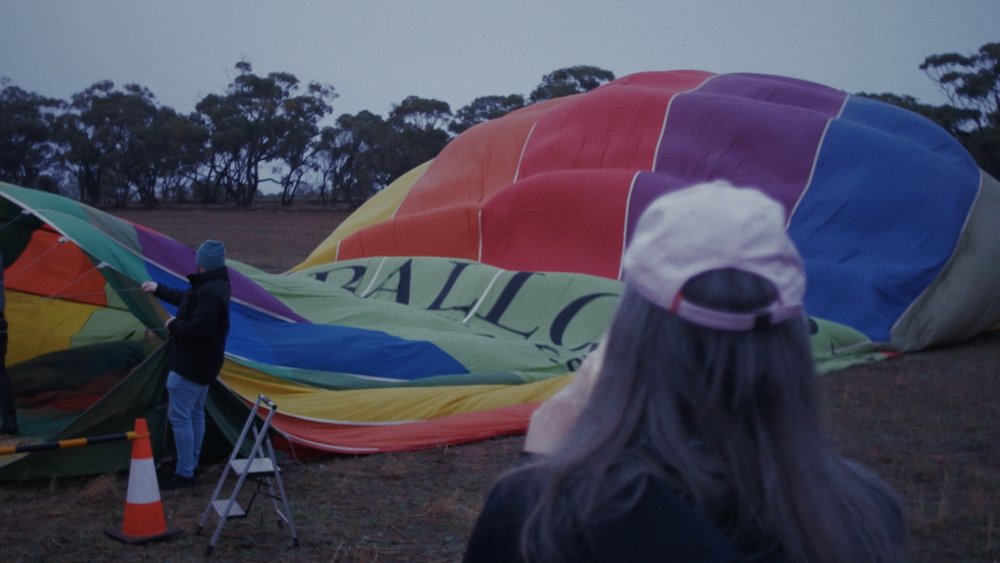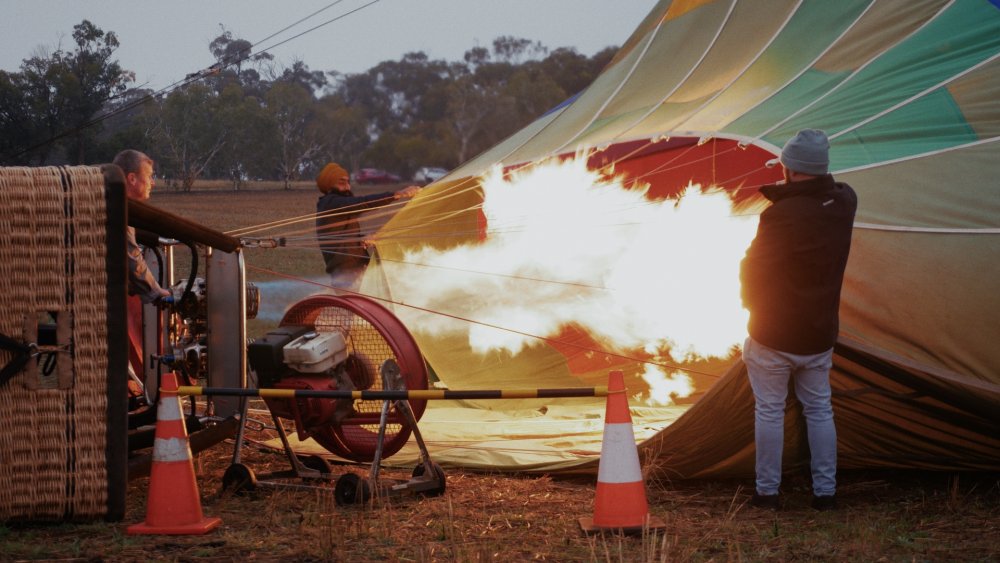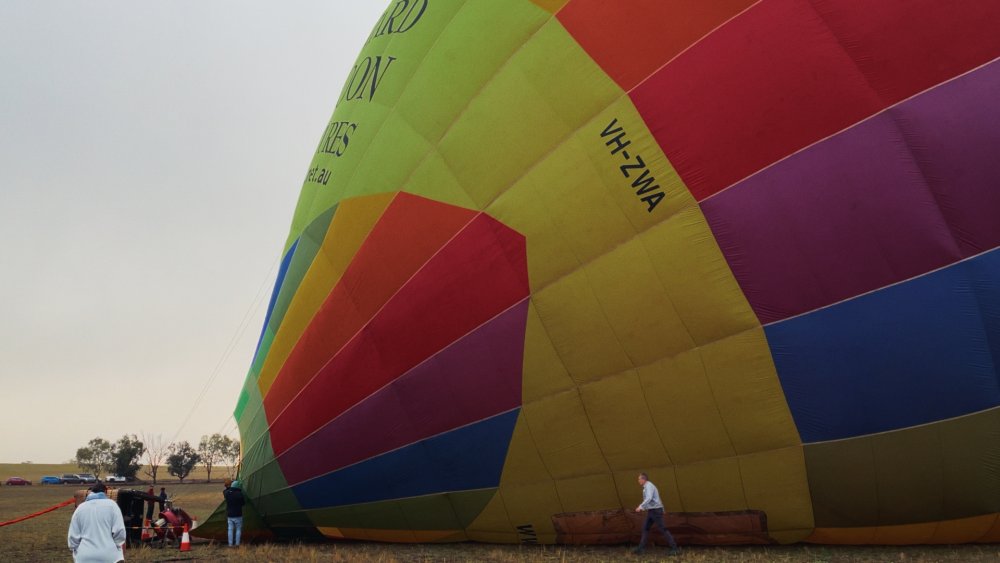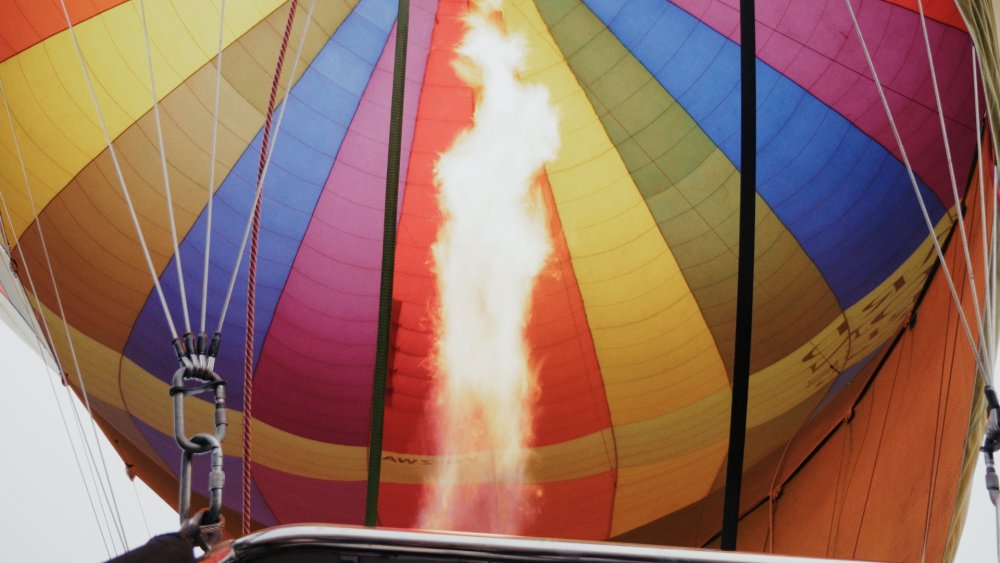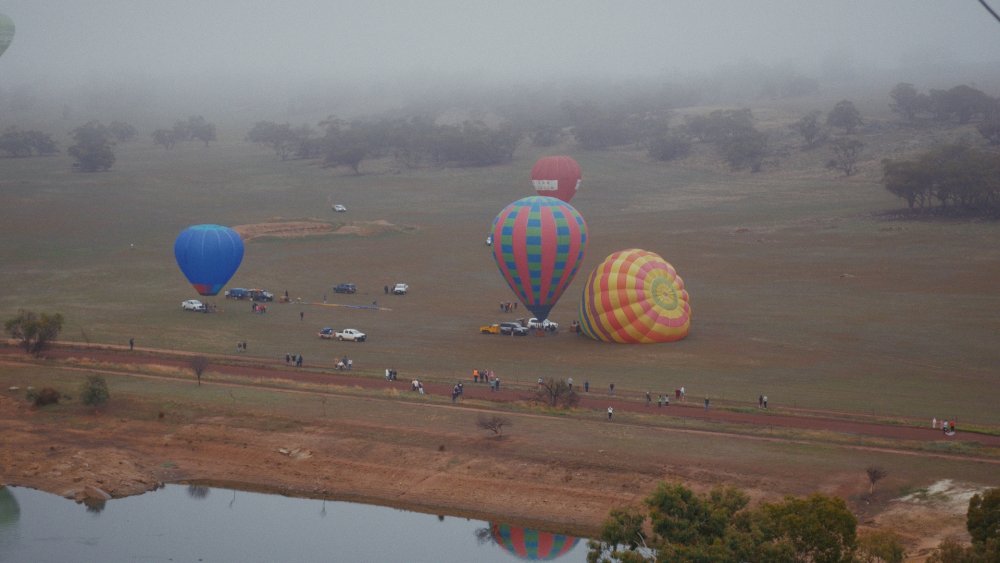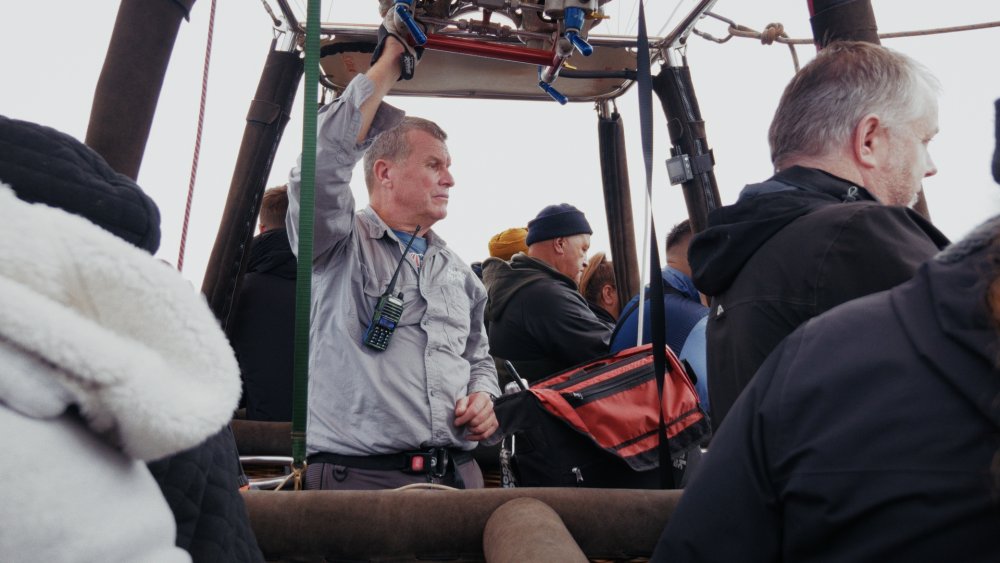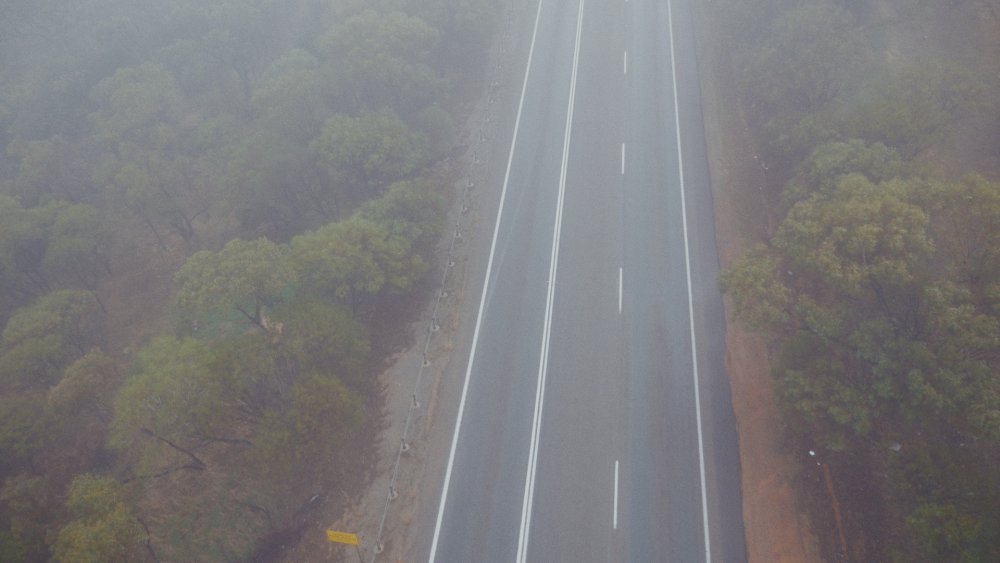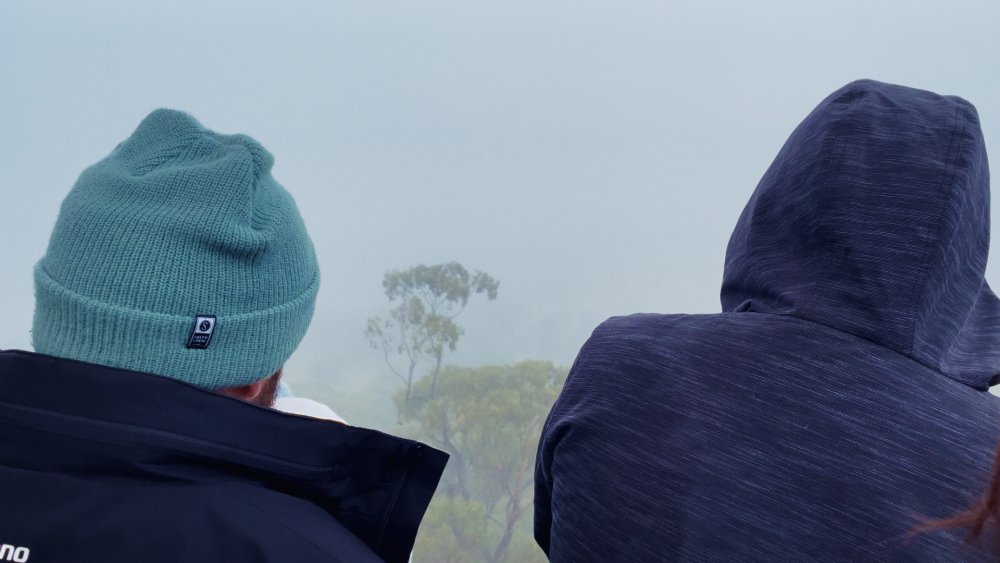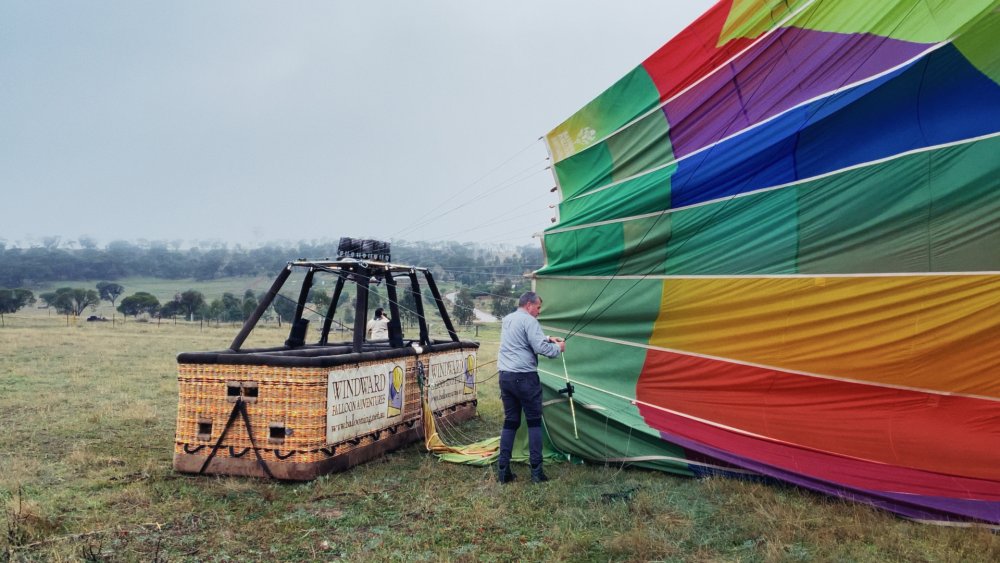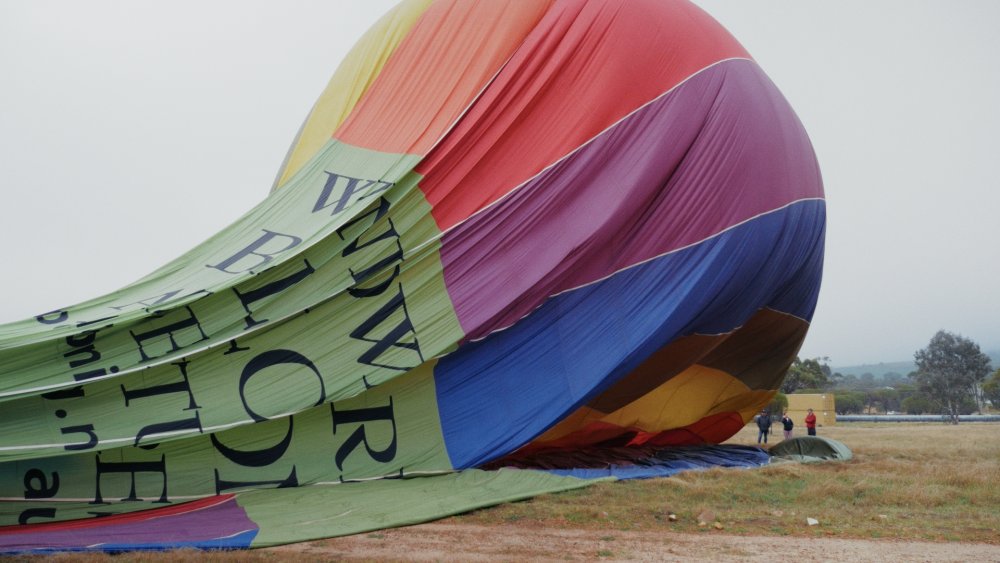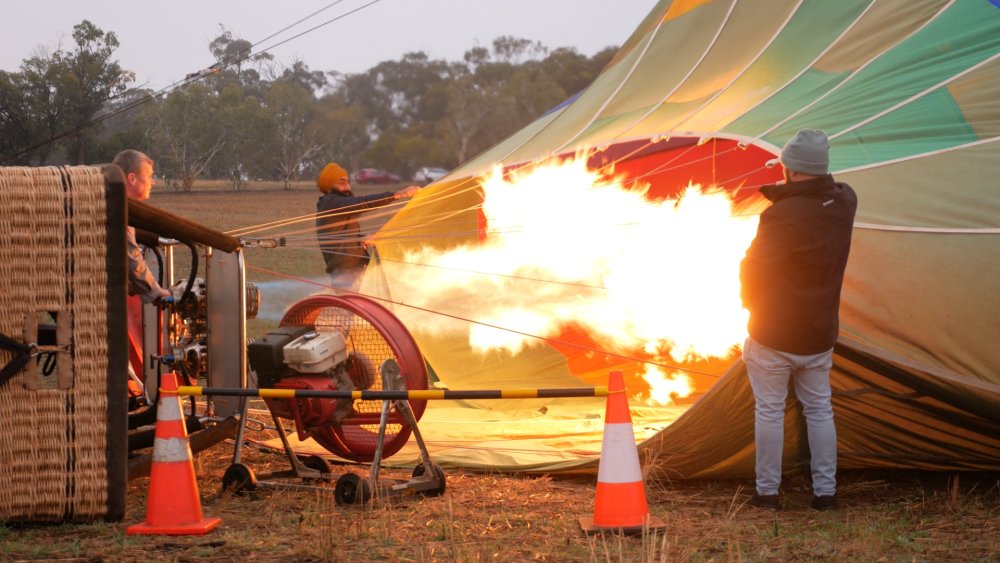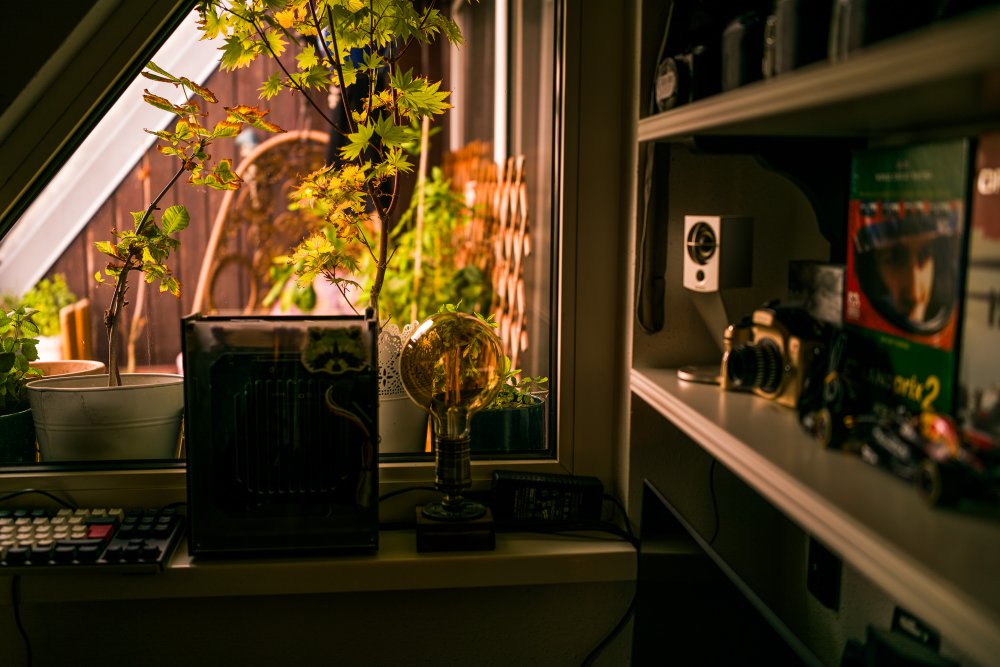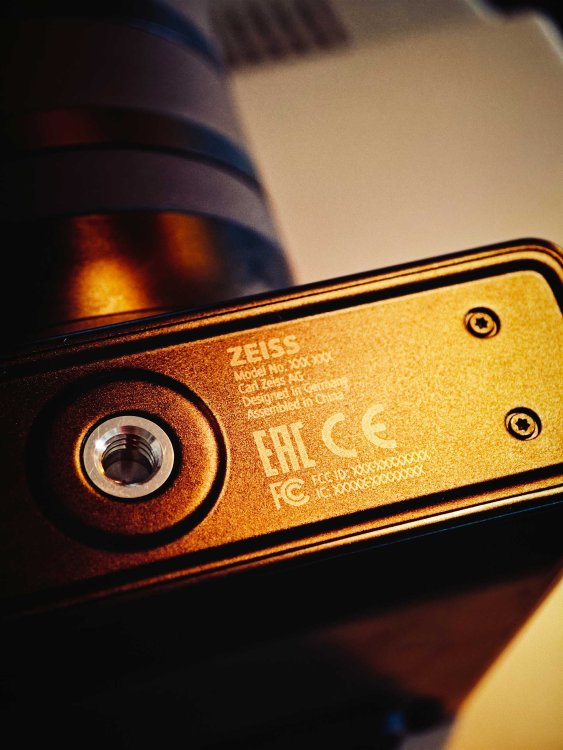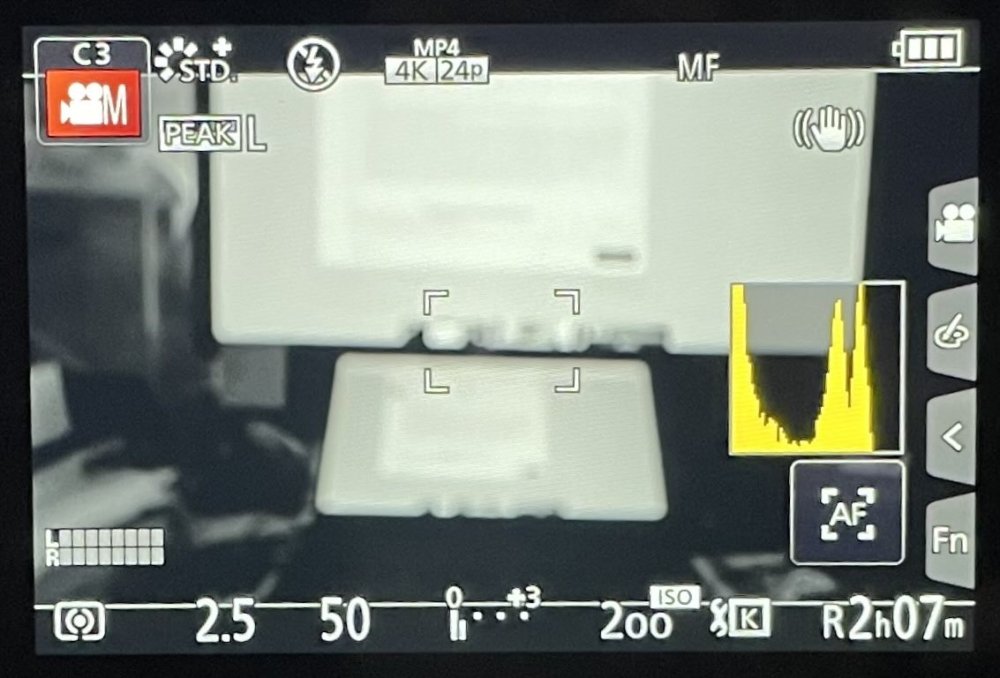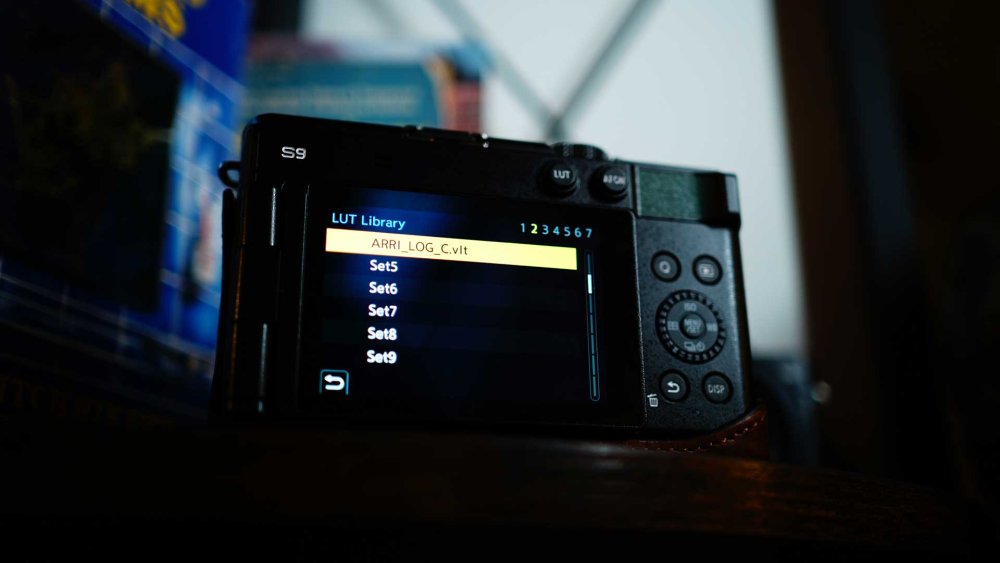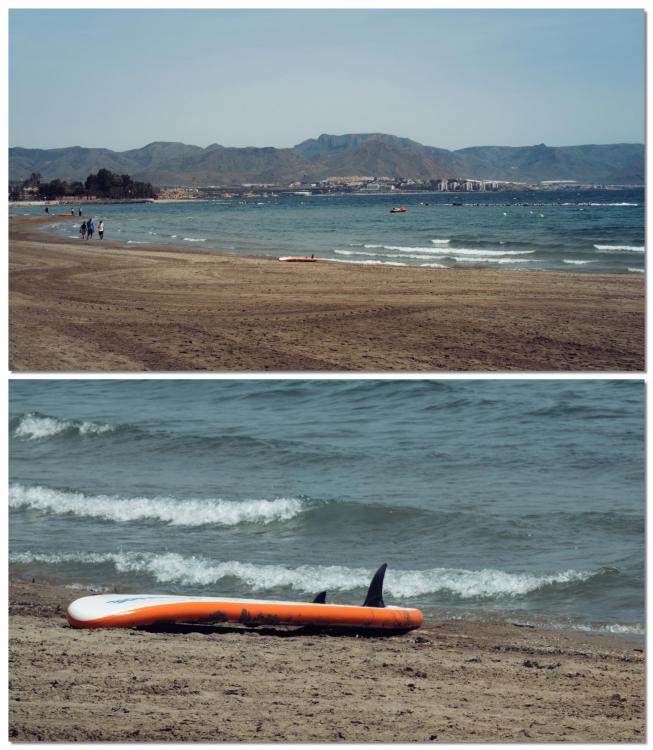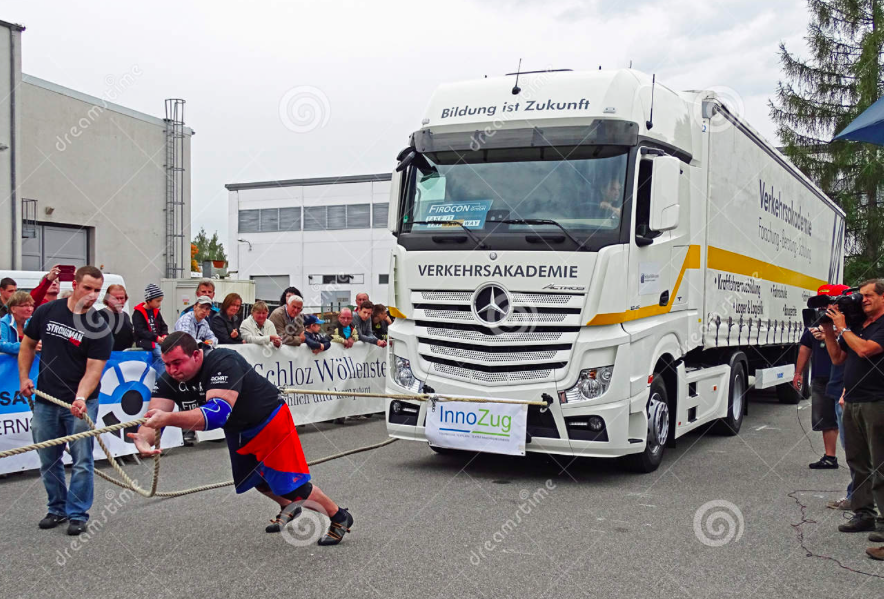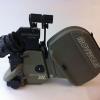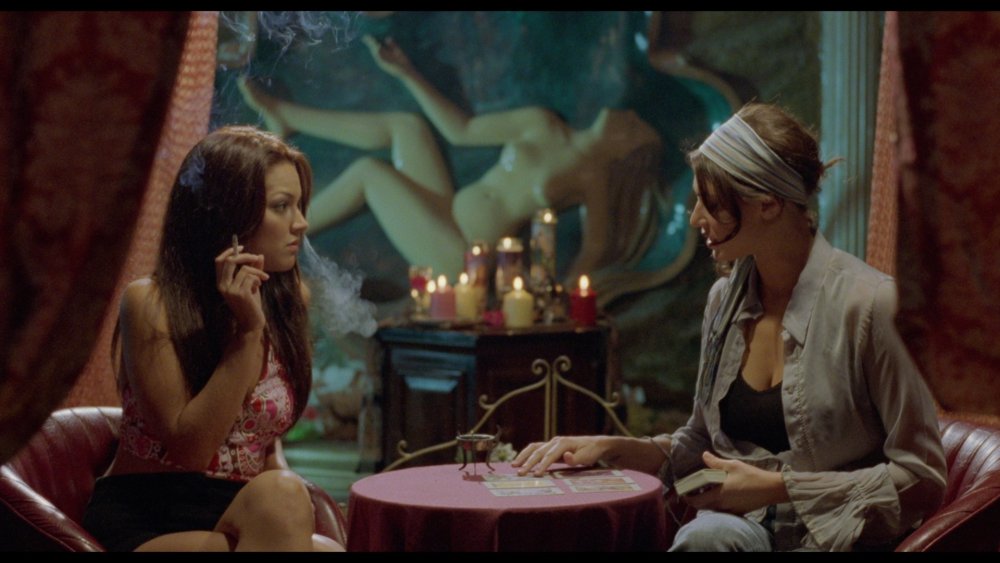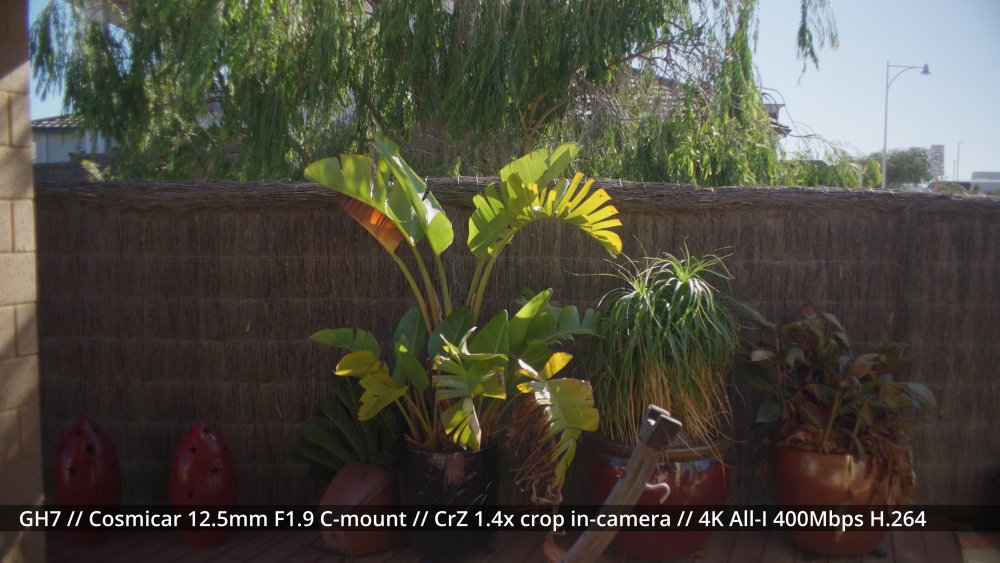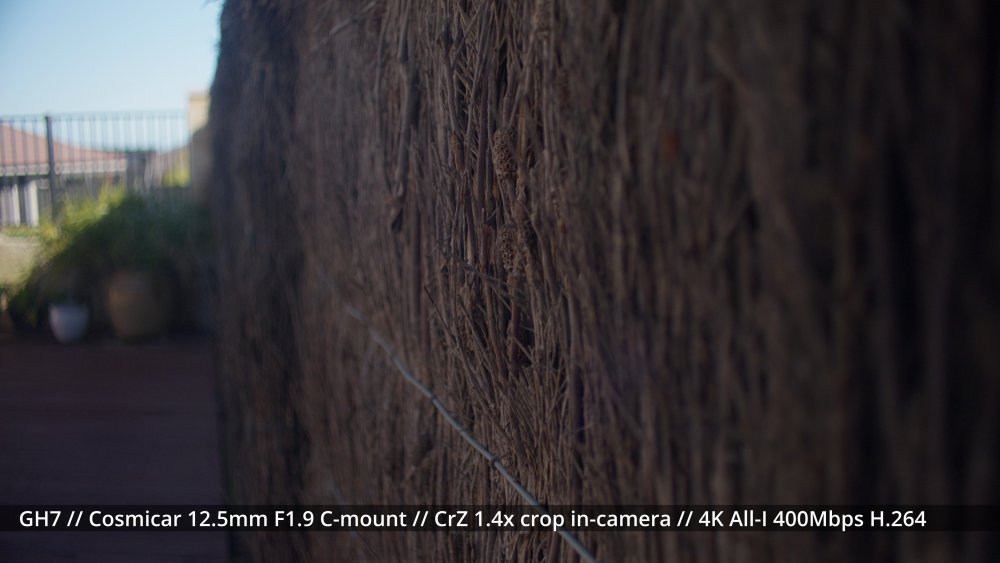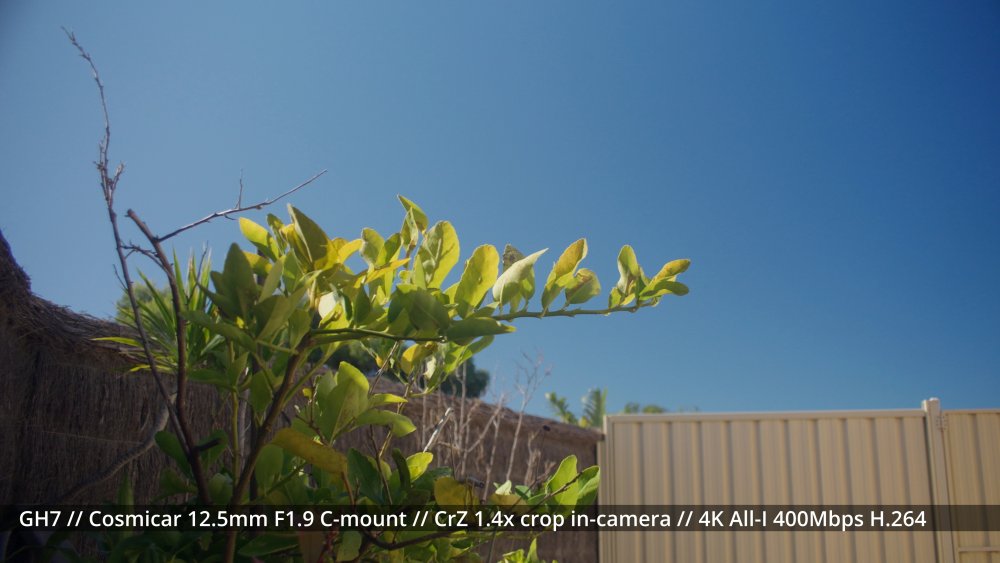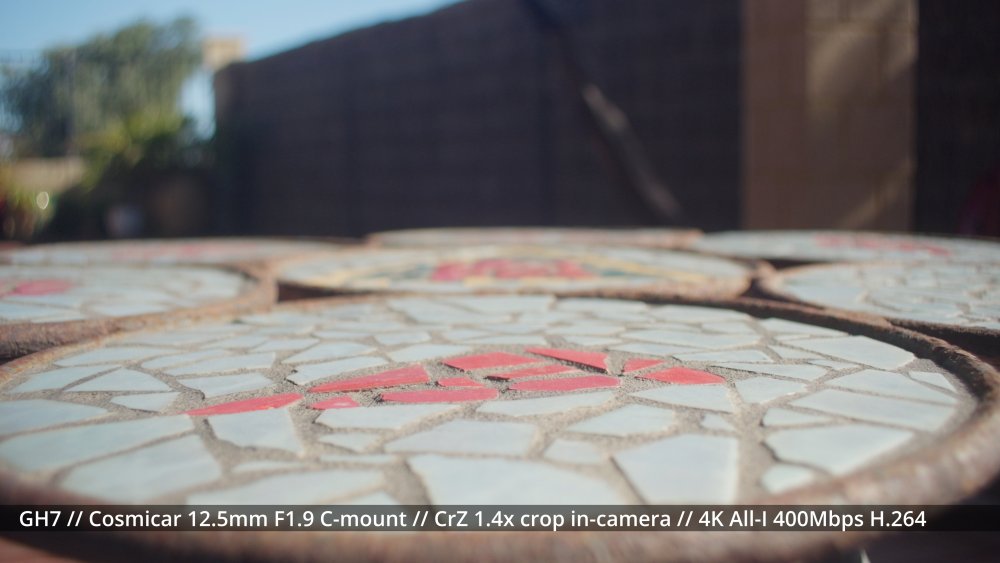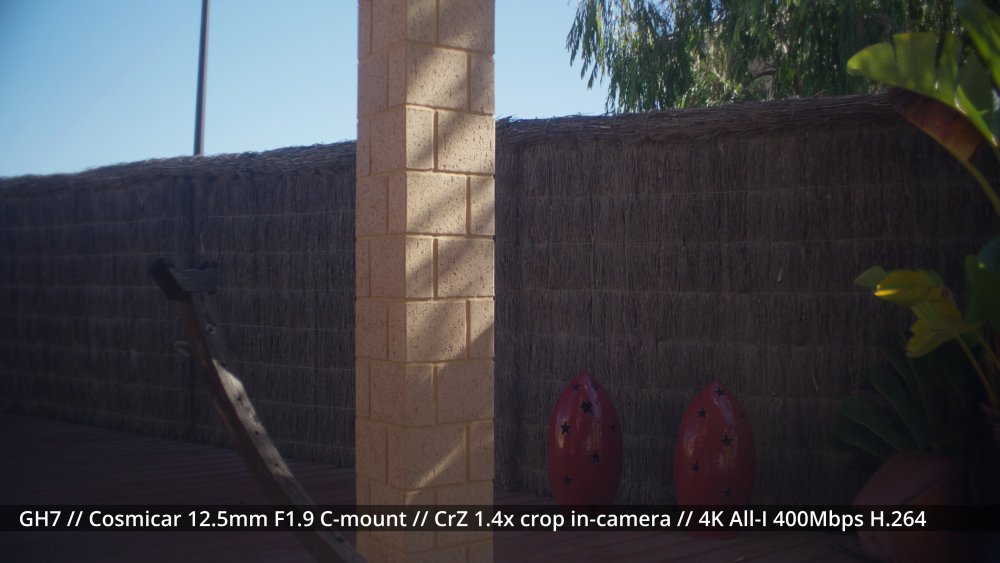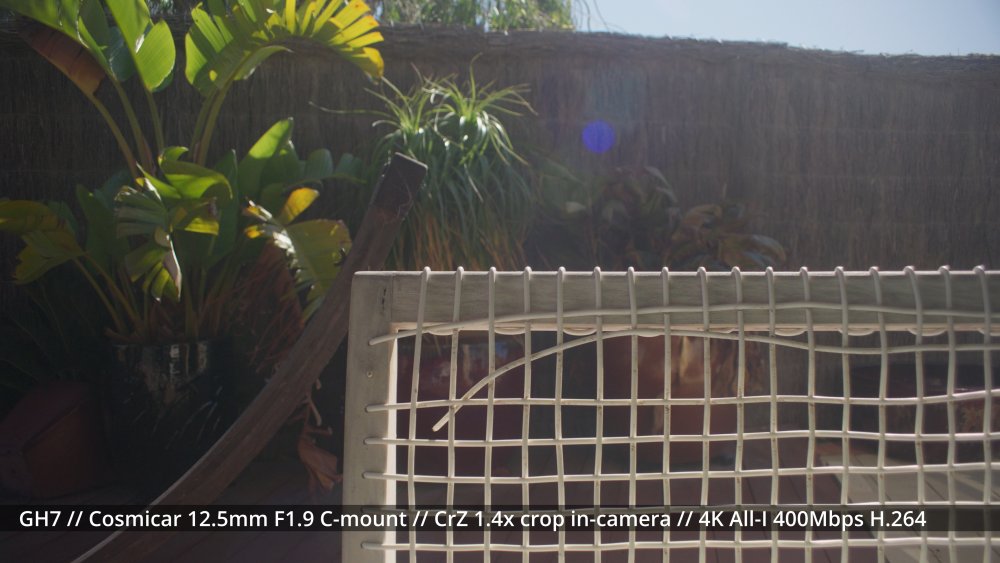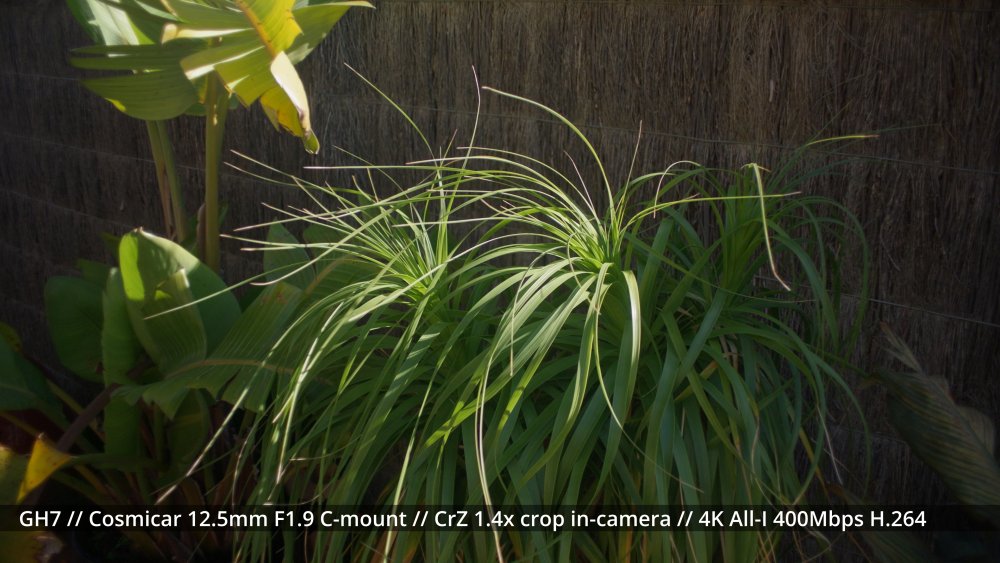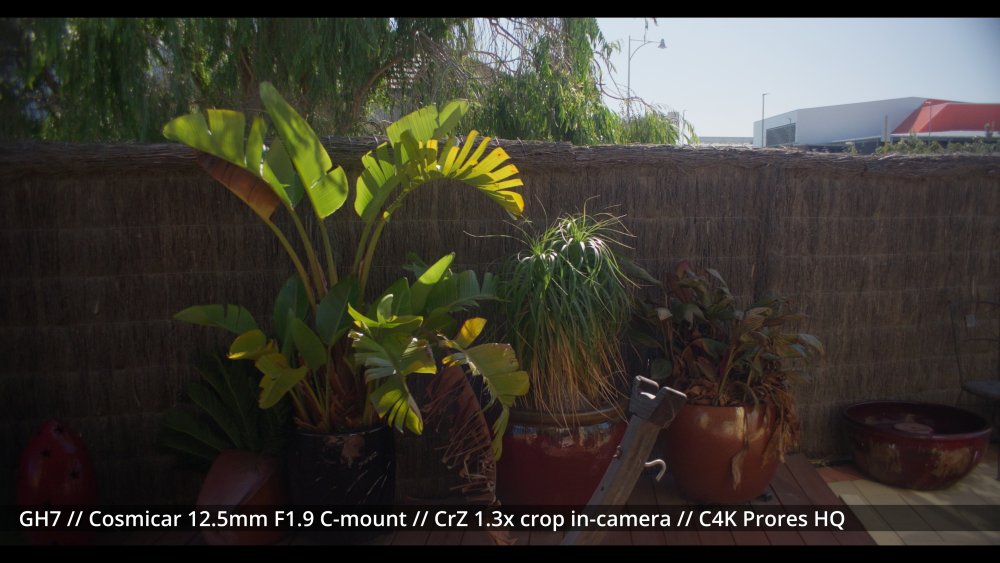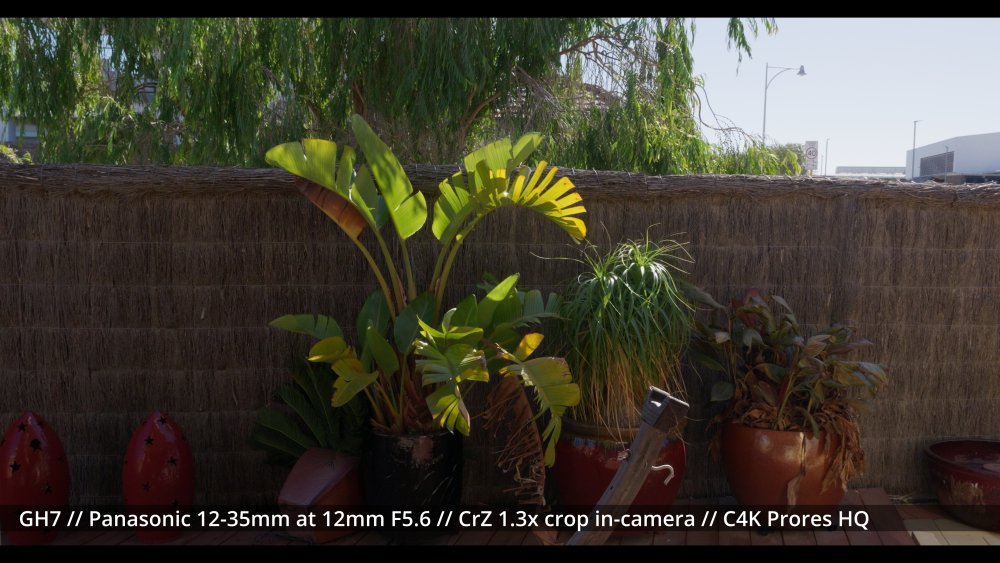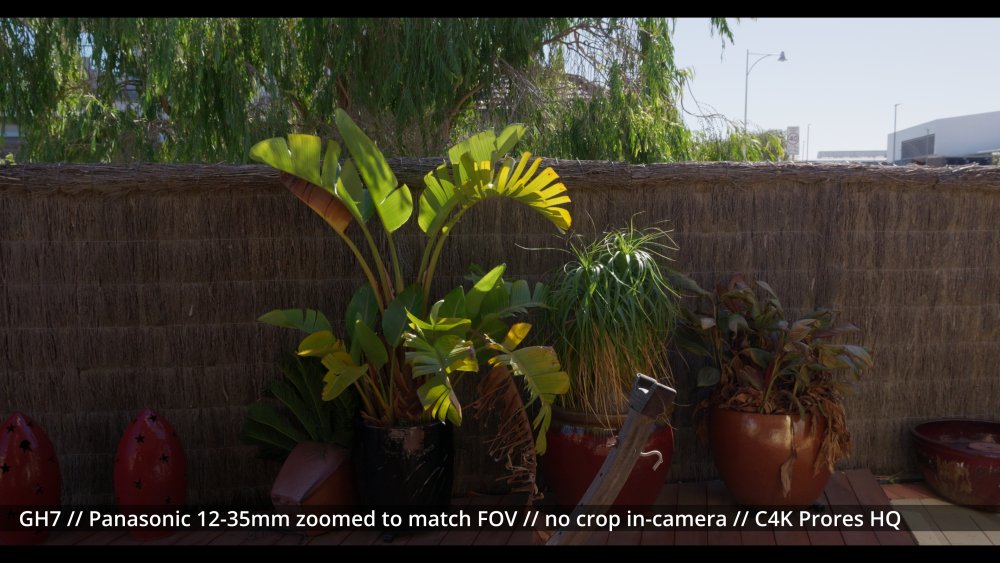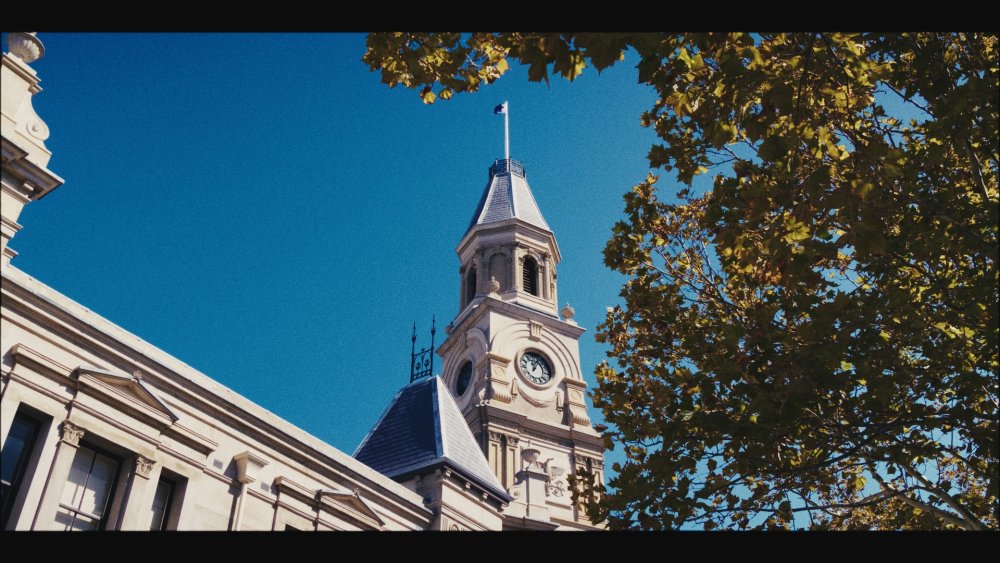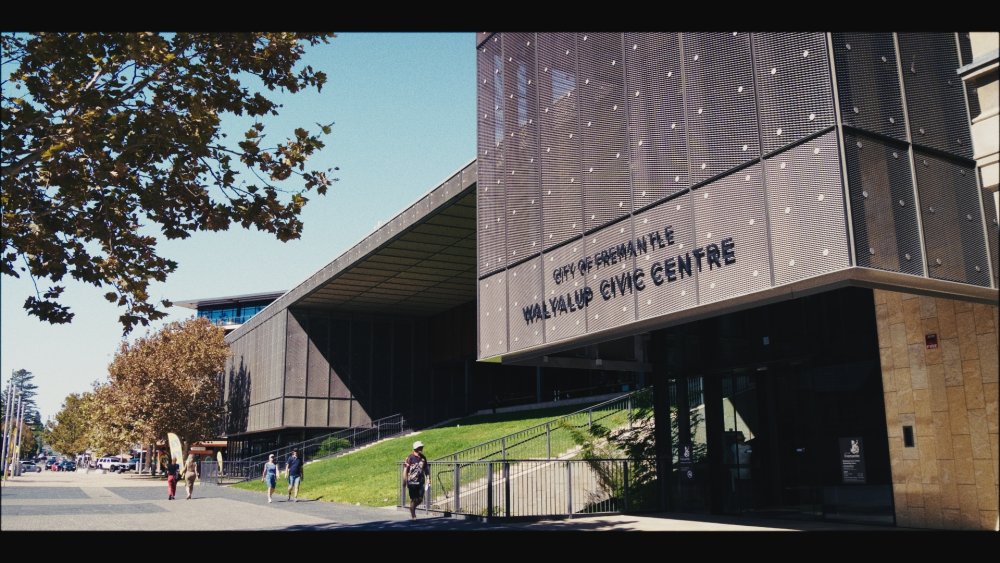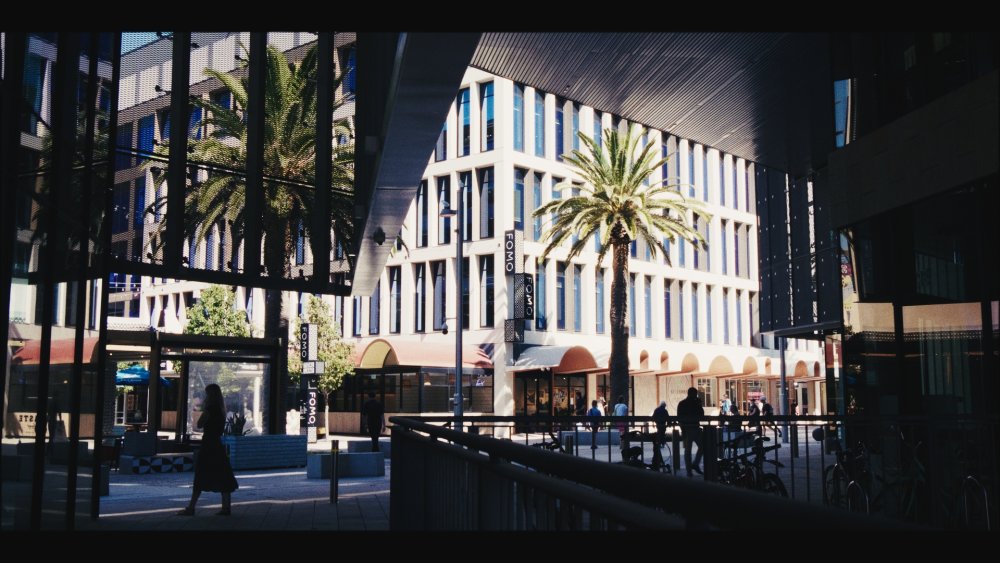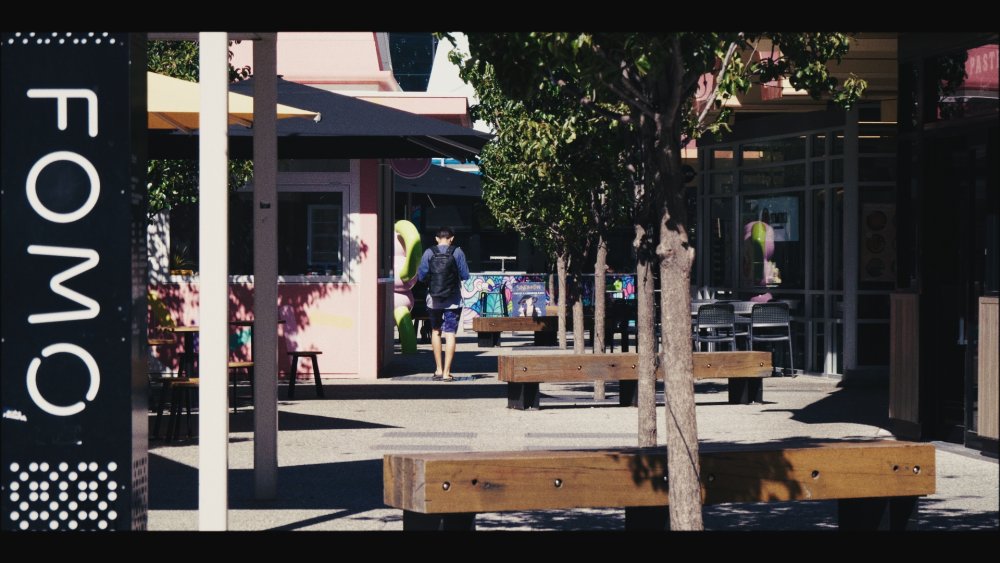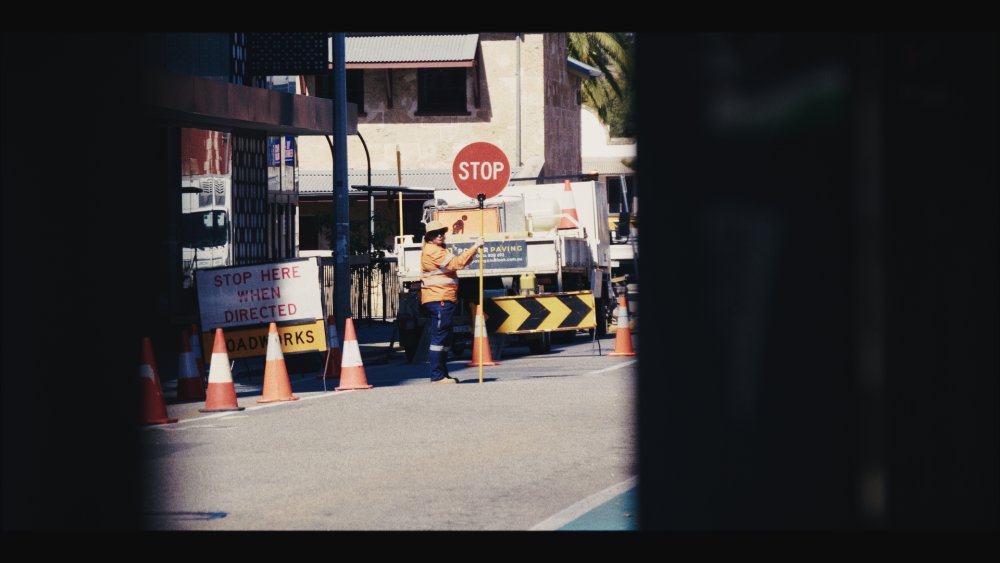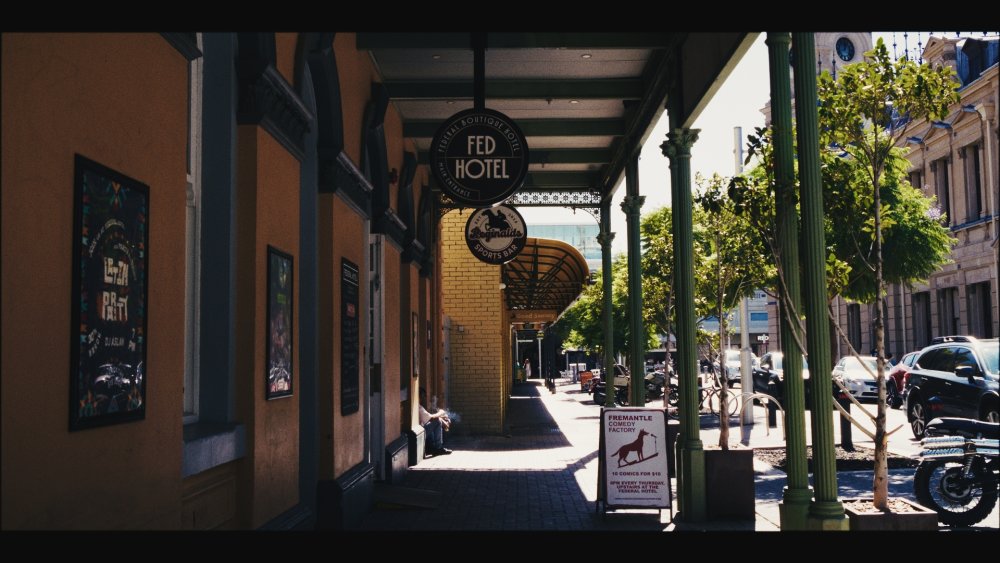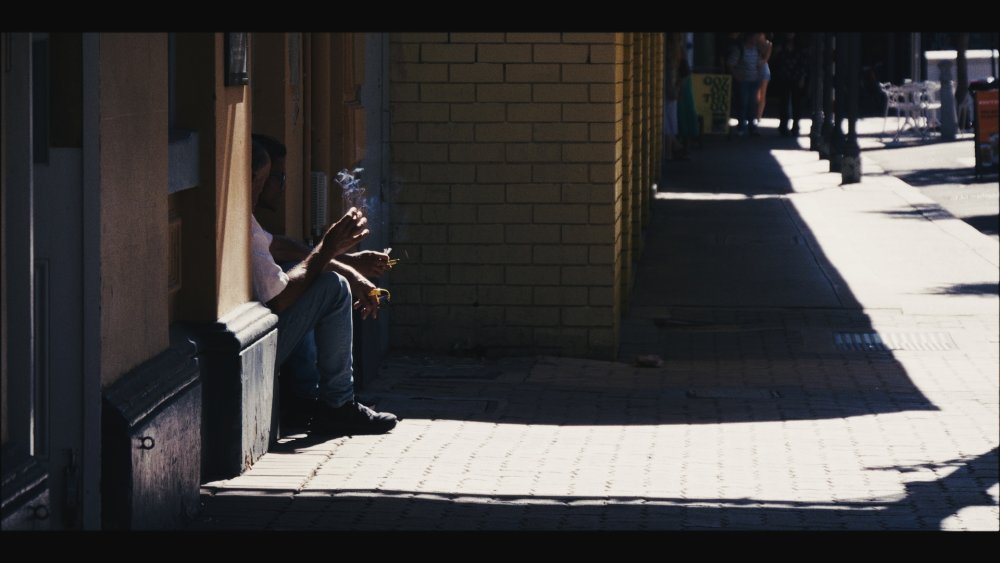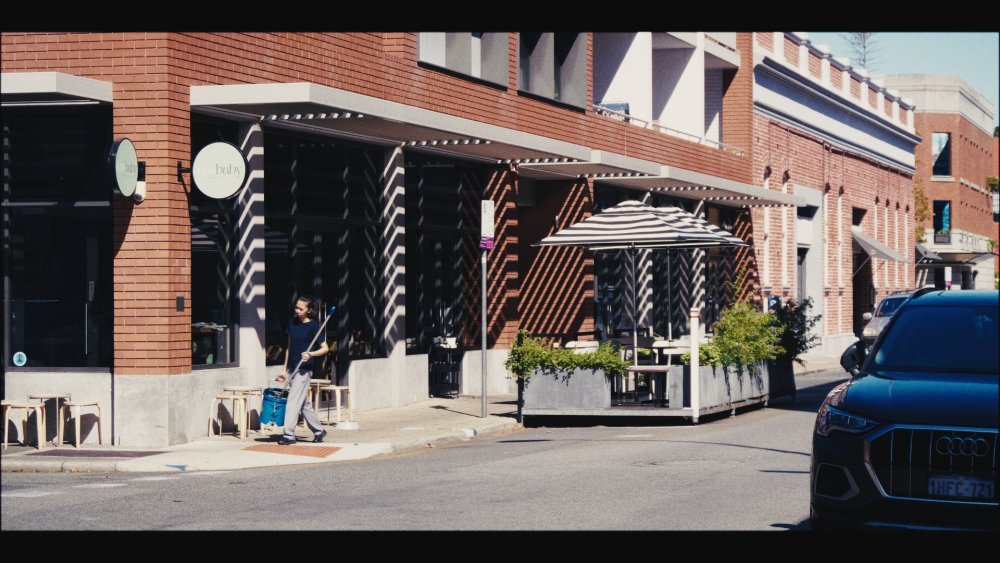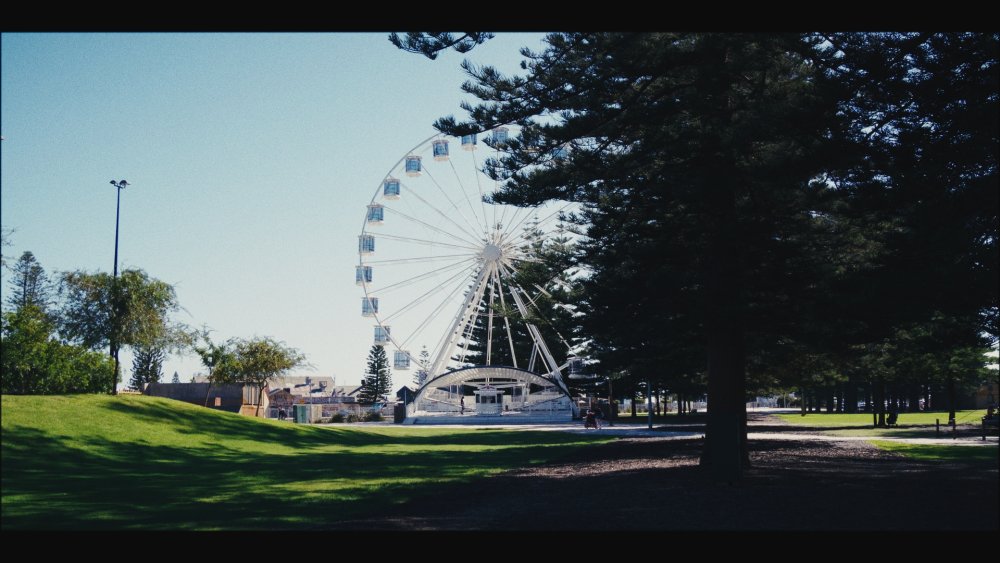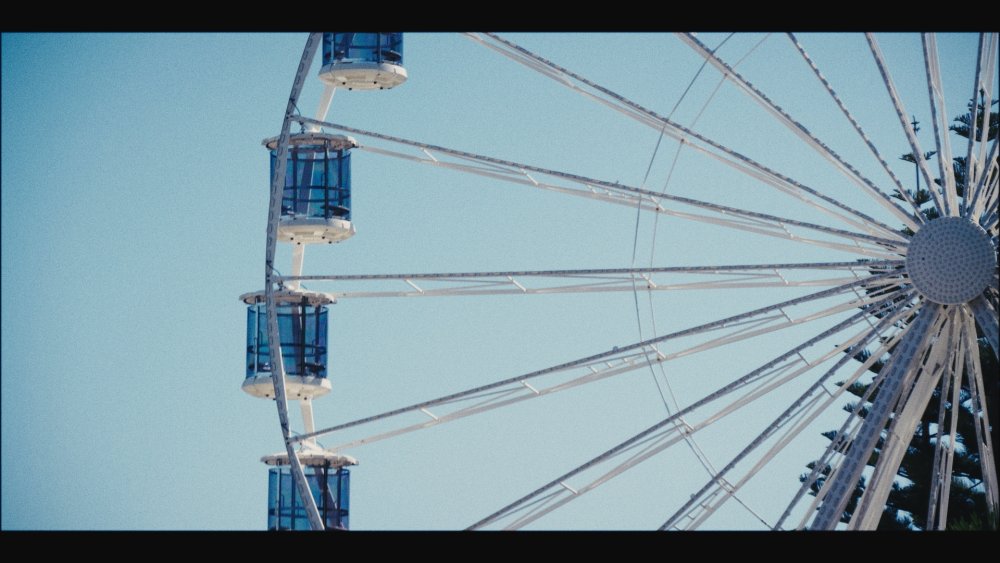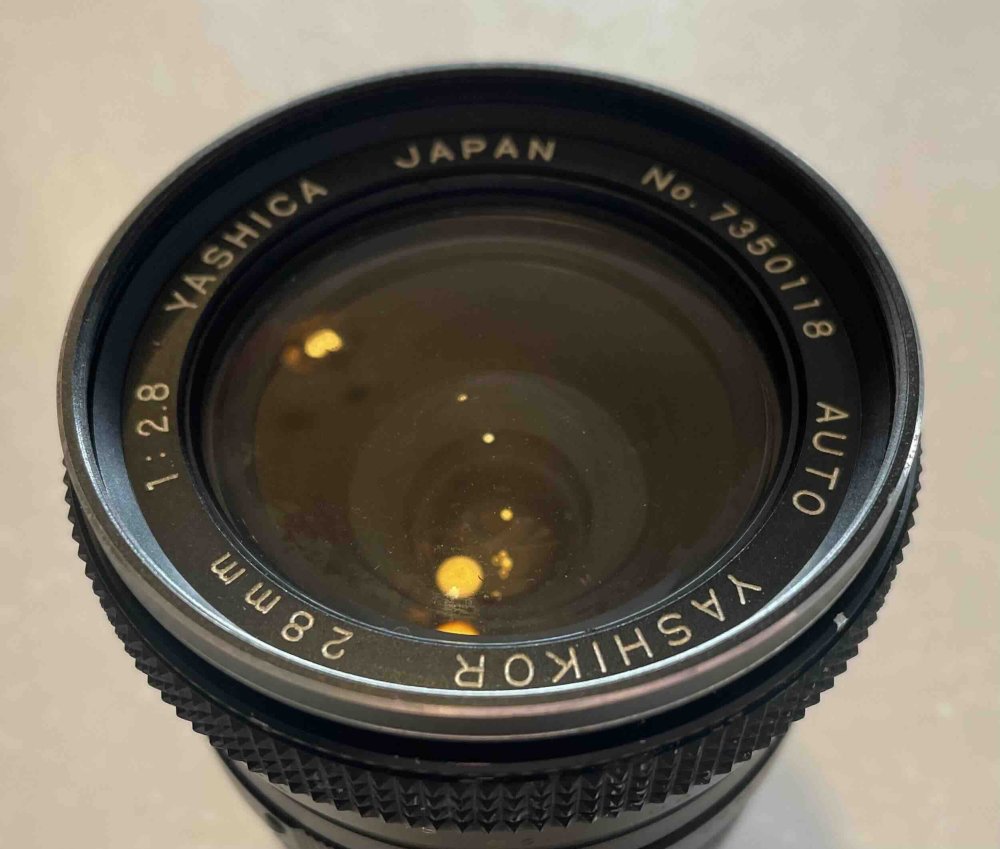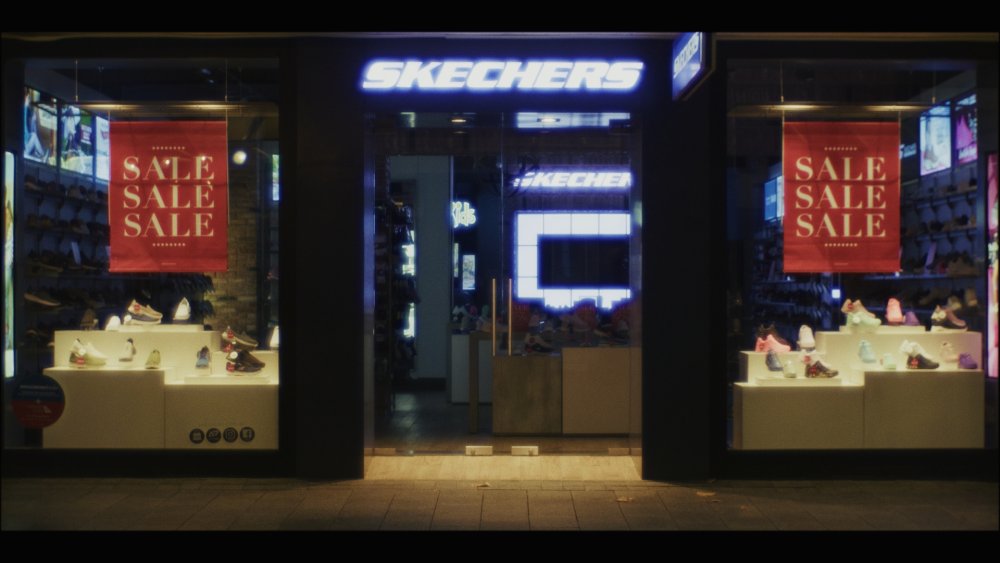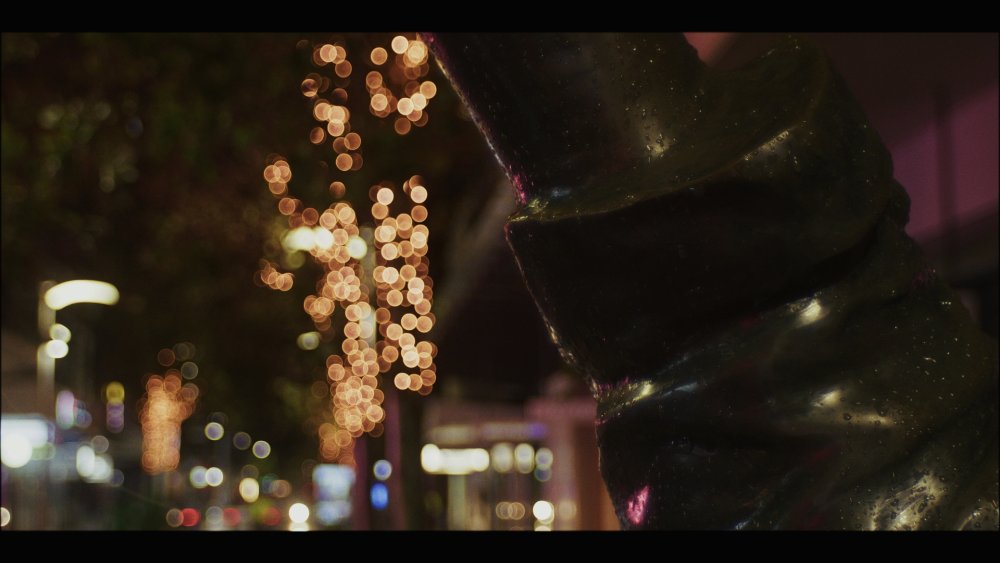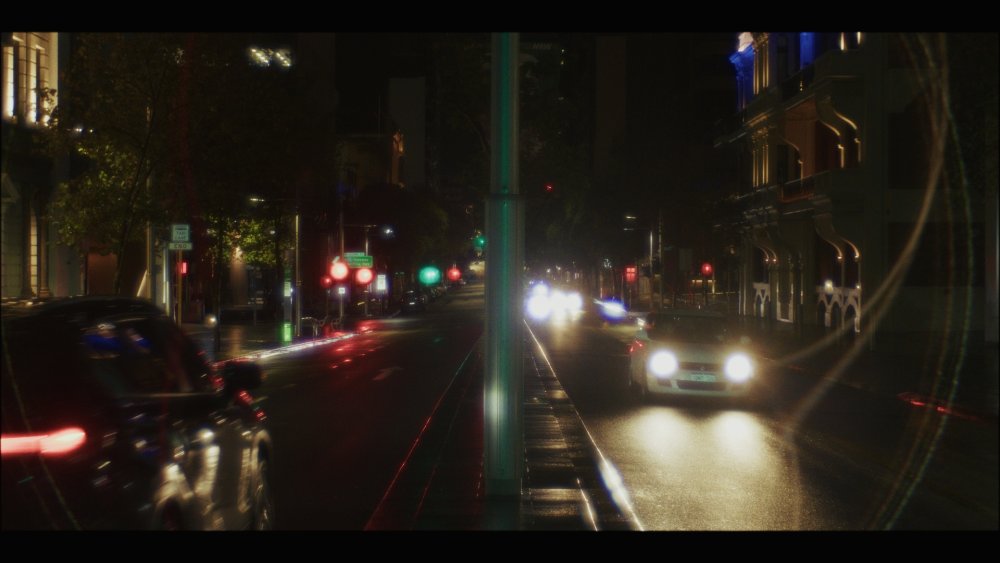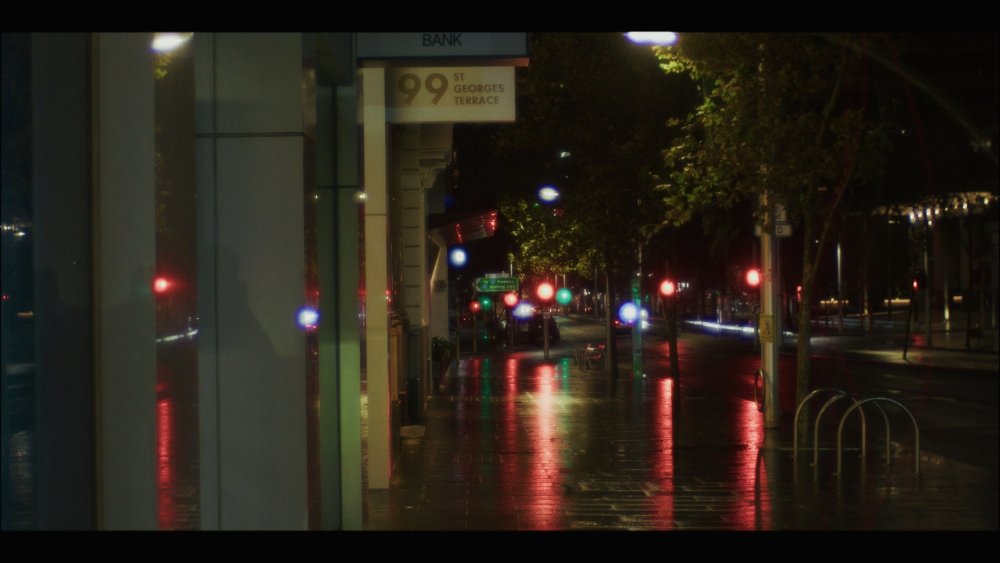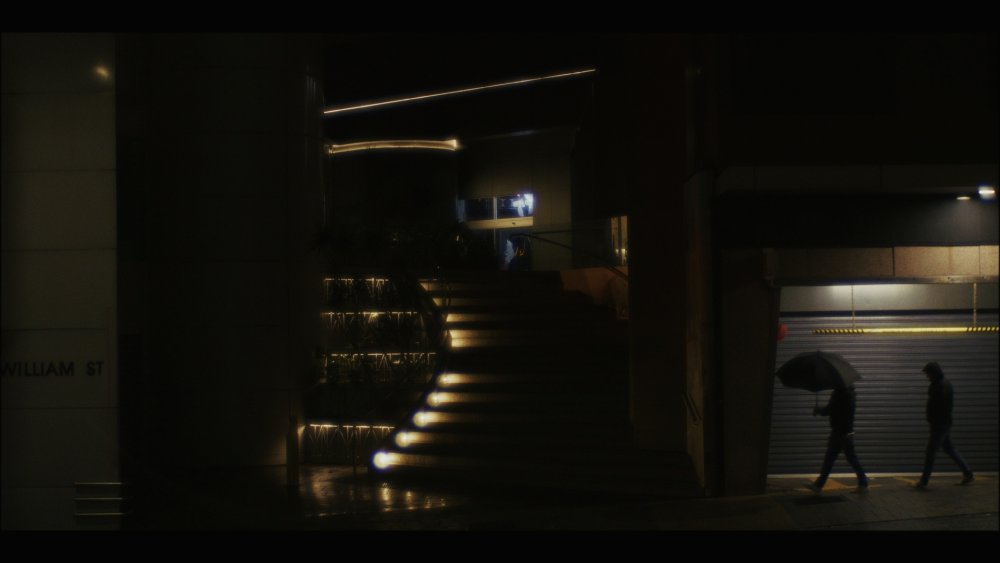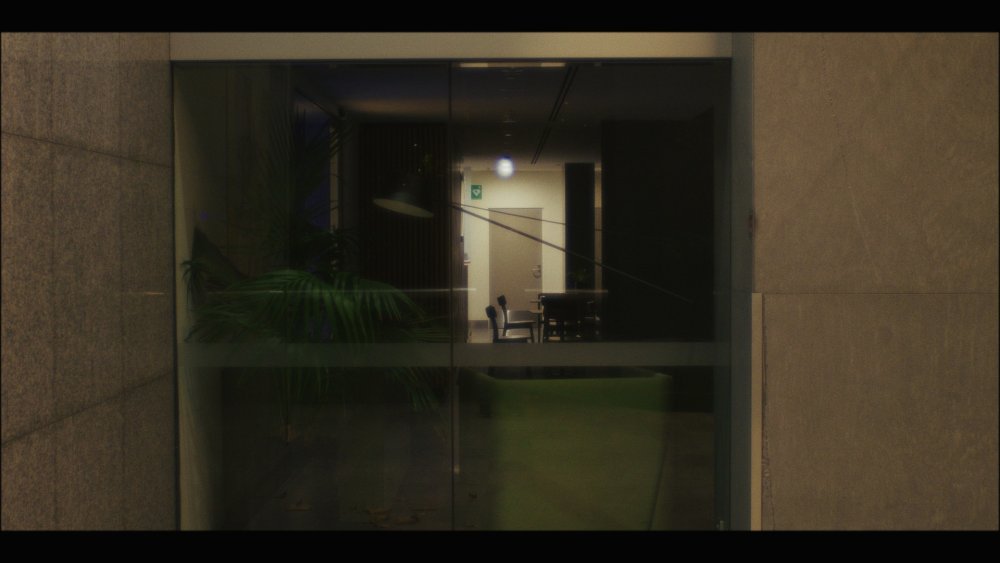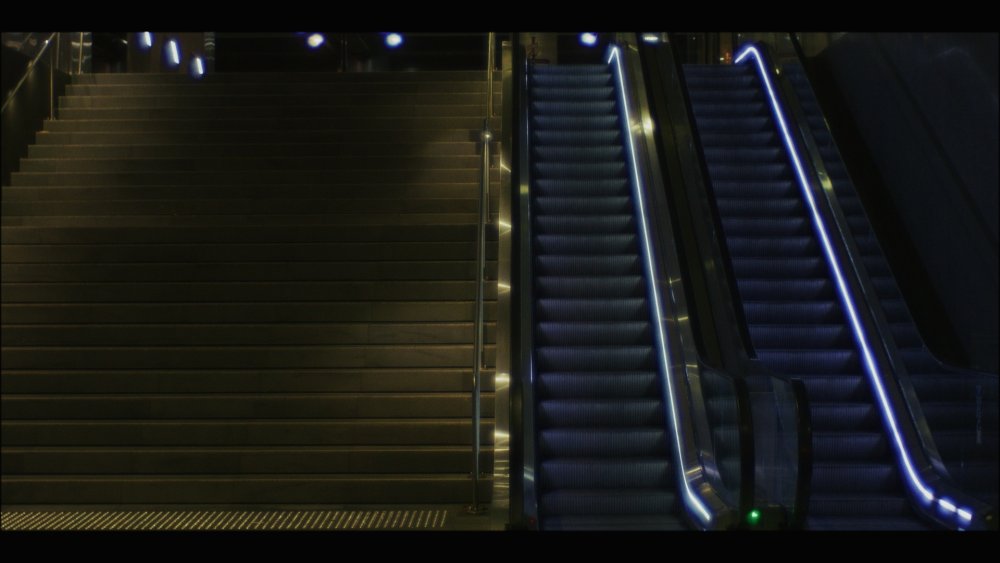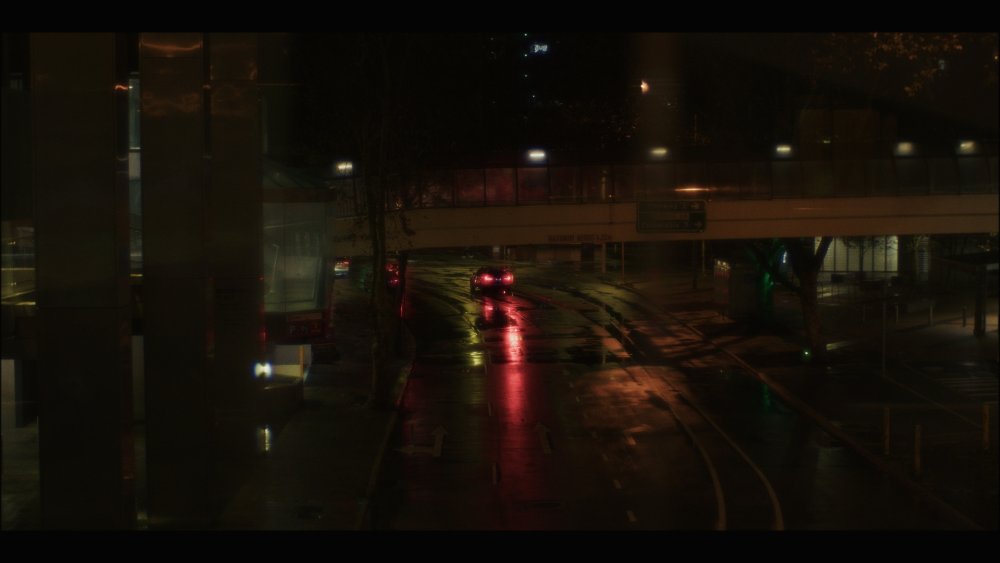Leaderboard
Popular Content
Showing content with the highest reputation since 06/08/2025 in all areas
-
Went hot-air ballooning and if there was ever a challenge for shooting, this was it. Extreme low-light and extreme DR from hugely bright light-sources. They say you can't take bags in the balloon, and it had been really wet weather, so I decided to go small. I took the GX85, TTartisans 17mm F1.4 for the low-light, Laowa 7.5mm F2 for an ultra-wide, and the 12-35mm F2.8. I was a bit cheeky and took a sling bag and kept it under my jacket. The requirement is that nothing is loose in the basket and that you can hold on with both hands for landing, so I figured my bag under my jacket was basically the same as having a big pocket. It's a crazy early start. We arrived in the field before first-light and they started setting up in pitch darkness guided only by torches. I started shooting at F1.7 and needed ISO6400 at first to get any kind of level on anything except their torches. I shot on the 17mm at F1.7 and gradually reduce the ISO until the balloon was mostly inflated, then swapped to the 7.5mm for a few wide shots, and then swapped to the 12-35mm F2.8 and it was time to get in the balloon and off we went. I also shot with my iPhone 12 mini for some quick shots using the ultra-wide when I didn't want to change lenses, and also as we were approaching landing, as I had put the camera away in anticipation. It was super-foggy and the pilot ended up having to land early and for a while we were going pretty close to the treetops so I'd put my camera away when he told us that he'd be landing at the next opportunity. Frame grabs.. mix of GX85 and iPhone, put through a quite moderate FLC pipeline. In retrospect I took the complete wrong equipment and used it in the wrong way (so, it's business as usual!) but the FLC pipeline really took the footage to the next level, and I used just enough strength on the film emulation to get rid of the digital look to the images. Here's a comparison. Grade (same as above): SOOC: The GX85 has super-whites so despite being SOOC that image is actually slightly clipped in-post and some highlights can be recovered, which the FLC grade has done, but you get the idea. The SOOC is with the GX85 default profile and has much more of a video look to it, despite being pretty good compared to other similar cameras. If I was to take the same equipment again, I'd lean into the darkness and just use the 17mm at F2.0 where it cleans up and use the GX85 at something sensible like ISO1600. This would have the early shots as perhaps being unusable, but it would mean that the torches the crew used wouldn't have been clipped (I clipped them in favour of exposing what they were shining on). We're going to go again later this year, and for that I plan to take the GH7, 9mm F1.7 and 14-140mm F3.5-5.6. This will be a much larger setup but if I use a neck strap then I only have to have one lens in a pocket and so I won't need a bag at all. I just bought the 9mm F1.7 and it's sharp wide-open, so apart from having AF, it is both an ultra-wide as well as a low-light lens. I can crop in-camera and/or in-post to get a tighter FOV, but you don't normally need long focal-lengths when it's that dark. The more I use this FLC pipeline the more I like it. If I'd have shown these images to my 2018 self, I wouldn't have believed me when I said that it was me that made them.7 points
-

Zeiss ZX1 full frame Android prototype, let's repair
Juank and 5 others reacted to Andrew Reid for a topic
According to a book, Dutch company ASML got into a big fight with Nikon a few years back. They both make lithography tools for semiconductors industry. ASML's optics supplier is Zeiss. To pressure Nikon into a settlement, they had to take the patent fight to them in cameras. So ASML got Zeiss to make them a camera. It also doubled as a marketing adventure, shown off in stores but rarely really ever in stock. Until one day this popped up on my radar, with the serial number XXX XXX. The AF wasn't working, or the manual focus (fly by wire), lens stuck at macro 30cm. So I cracked it open, mopping sweat off forehead. Inside is 256GB SSD, final release model was bumped to 512GB. Android 6, with Zeiss test suite of apps onboard including FCC certification test suite 🙂 A music player. A Dutch full frame 36 megapixel sensor with some analogue colour. A Zeiss 35mm F2 lens (but different optics to the Sony RX1), 4K video (Super 35mm crop) and an EVF. And some weird prototype issues. I'll make a YouTube video on it. Sample shot And I still have no idea how I fixed the AF. Just wiggled the lens and sensor ribbon cables a bit and it started working properly, but there was no sign of either cable being loose in the first place! It is quite a fun tool, and a bit different. Android is decently snappy on it, the camera app is well designed, the physical dials are lovely but it doesn't have a joystick or command dials... So a lot is on the touch screen, but it's well done. Shall I root it? Update to 3.0 production firmware? (Risks bricking it). Given the rarity factor... I probably won't!!6 points -
The YouTubers are fighting!
andrgl and 4 others reacted to eatstoomuchjam for a topic
Yeah, exactly. That's what I'm saying. Their banter is still good/fun, but there doesn't seem to be even the slightest spark in the reviews anymore. That's probably also a symptom of PetaPixel demanding a higher volume of reviews and with a number of them being for things that are inherently uninteresting. And I get it - to some extent, how much is there to say about a 21mm lens? And in that review in particular, they didn't even seem to be doing any basic research before the videos - talking about Thypoch coming out with one (the Simera-C has had a 21/1.4 lens for months already, though with a different design) - and 21mm has been a Leica staple for many years with the 21/1.4 Summilux having been released in like 2008 (which makes sense since Thypoch, to some extent, is emulating Leica with the Simera series). But yet, Chris acted like a 21mm lens was something he'd not heard of before... presumably because he just doesn't care about what he's reviewing anymore. It's a job. Lens comes in, take some photos around Calgary, do some LoCa tests, shoot a test chart or two, lens go out. Ready for the next lens to come in... But they've also become a channel that won't publish a negative review at all. I had high hopes for the new person - Sarah? But then she did a review of some shitty wearable camera that seemed way more like an advertisement and any criticism mixed in with tons of praise, despite that the footage looked like pure garbage. Then the next week in the Podcast, they acted like people were crazy for suggesting it, given that some small criticism had been slipped in to a 14 minute mostly positive review where the footage is described as "good enough" and since the gross oversaturated colors are "so vibrant there's not much you have to do to them." To me the footage (the link should go right to the sample clips) could be much better described as "a gross, shaky jello-filled nightmare." Later, in the conclusion, the presenter concludes that the camera is definitely worth the $200 price tag, despite that it's redundant with a smartphone and records with quality much worse than a smartphone. If that shit is sponsored, it's not disclosed and they actively denied it - so that's gross. If it's not sponsored, then PetaPixel's standards on cameras are incredibly different from mine. It was already a thin ice - and posting videos heaping glowing praise on AI slop and deleting critical comments is just the last push that I needed.5 points -

How do you do video mode on the gx80?
newfoundmass and 4 others reacted to kye for a topic
Congratulations on your purchase! I have the GX85, which apparently is very similar to the GX80, but you might notice small differences perhaps, so I guess maybe not everything I say below will apply to you. I shoot run-n-gun fast-paced stuff so probably very similar to the challenges you are facing. Here is how I setup and use my GX85. This is the screen, showing lots of handy info. Going from top right, here's what I do. I use the custom modes to store different configurations. In this case, it's in C3 and that is fully-manual. You can't set the mode (ie, PASM) once you've created the custom mode, you need to create the custom mode with the right PASM mode. To do this you choose the right PASM mode that you want to use using the top dial, then save that configuration to the custom mode with the "Cust Set Mem" function, and then you can change to that custom mode using the top dial and then further customise that custom mode. I use the standard profile. I've done lots of testing and the standard profile is the most flexible if you're going to further tweak the colours in post. If not, feel free to choose whatever mode you like. I use focus peaking and have set it to a custom button to switch between the high and low sensitivities. I use this in combination with making the display black and white so the peaking is more visible. No flash. 4k 24p. I've setup back-button focus. This means the camera is in MF mode, but I have configured the AE/AF Lock button to enable AF while you hold it down. The way I shoot with an AF lens is to push in that button, see what it focuses on (which is obvious because of the peaking) and then I release the button, then I hit record. This means that the focus doesn't change during the shot. This means the focus isn't hunting around all over the place, it's not focusing on the persons hand or on the person that walks in between you and your subject, it doesn't focus on the background if they move in frame, etc. It won't follow them if their focus distance changes, which can ruin some shots, but my experience is that AF jumping around ruins more shots than the subject moving does. Plus, if the subject moves slightly the aesthetic of them being slightly out of focus for a bit is far less objectionable than the AF jumping around for no reason. IBIS is enabled. IBIS gets a lot of criticism but if you stand still and hold the camera as still as you can then the IBIS will simply help you to be more stable and the jitters and jello effects can be reduced entirely. Shooting in fast situations means that tripods and monopods are often too slow and cumbersome, but if you try and emulate a tripod by using IBIS (or better yet, combine IBIS with OIS from a stabilised lens) then you can easily get very stable hand-held shots that with a tiny bit of stabilisation in post can be perfectly locked off without and artefacts at all. I set my AF to be in the middle of the frame, which combined with back-button focus is really fast and usable. Even if you do the photography thing of putting the subject in the middle, doing AF, then setting up your composition, it all works perfectly. I expose using the histogram. Exposure is a big topic, but I have done extensive testing and have concluded the following. In the Standard profile, you can do quite significant changes to exposure and WB in-post, even with simple tools, if you keep the exposure in the middle. The limits are that if something is clipped then it's clipped (of course!) and if it's in the noise floor then it's also gone. Apart from that, you have lots of flexibility. Audio meters show the levels. I use auto-levelling, but audio isn't really a big part of what I do and if you only shoot short clips like I do then any variation in level that it introduces isn't going to be much over a short clip, and it saves more shots by adjusting itself than it ruins. You can always set it to manual if you like. Aperture and shutter speed. I always use 1/50s when I shoot manually. Adjust as you see fit, depending on if you want to expose with shutter speed and not use a vND. Personally, I find that not having the exposure going up and down randomly is a good thing, and adjusting the shutter speed with the dial is just as painful as adjusting a vND. If you're using a manual lens then you can just set the camera once, and then all your controls are on the lens (vND, aperture, focus) so that's a really nice way of working. Lighting doesn't change that much, especially in daytime exteriors, so it's not a big deal. I've swapped to a high quality 2-5 stop vND and it's got enough range for daytime if you're willing to stop down a bit during the brightest bits. In busy outdoor situations you don't want to blur the crap out of the background anyway, so stopping down is actually more relevant than isolating subjects to the point where the shot could have been taken anywhere. The exposure meter is sometimes useful, but it's dumb. For example if you're shooting a person and a white van drives past in the background it thinks that you should change the exposure. Obviously that's dumb because you're shooting the person and not the van. ISO200 = base ISO. This camera doesn't have great high-ISO, so stick to base ISO when you can. WB = 5600K. I shoot exclusively in this mode. After using auto-WB for many years, I've come to realise that while different lights appear different with a fixed WB, things look like what they are. During the day things look right, sunset looks very warm but looks right, fluorescent lights look green but that also looks right. I rarely change WB in post now, and if I do it's to even out and tiny variations between shots just to polish the final video. My final piece of advice is to get a native zoom lens. Either the 12-35mm F2.8 or 14-140mm F3.5-5.6 are great, but the 14-42mm kit lens is also very capable and not to be underestimated. In complex situations you are often restricted in where you can move to, and will often want to zoom in to control your compositions. Having AF speeds up your shooting substantially, especially when you might only have seconds to get rolling when you see a moment about to happen. Happy to discuss further if you have questions, and I recommend searching around here, I've been posting lots of stuff over the years, including lots of tests and sharing what I have learned. Also happy to talk about strategies for shooting coverage, etc. Once you buy the gear and learn the settings you can make a video. It's what's in front of the camera and what's behind the camera that determine how good that video will be.5 points -
**Haven't been active a while but have been lurking often, just not posting. Hoping to get back to posting much much more regularly now and actually being involved in this awesome community. Hope everyone is doing great and making awesome art that plays in sequences of frames 😉 "_names_are_hard" from the magic lantern forum made a post yesterday announcing a new official development team; I am not 100% sure but seems as though this was not the case sine a1ex left a few years ago. Obviously, awesome developments have still occurred in the mean time, such as the incredible work done to the EOS M, 5d Mark iii and more to sd overclock, implement new binning modes that provide more image detail and less moire, and enable excellent previews in modes that previously rendered almost unusable to monitor. Now an official development team is back, and their aim, according to the post, is to implement features into main builds; finally we do not need to dig through forum posts anymore lol... What is even more exciting is the announcement of great improvements towards Digic 6 and Digic 7 cameras. The Canon 200d/SL2 has an OFFICIAL build with WORKING RAW VIDEO. This excites me, as supposedly this camera has an entire stop better dynamic range at ISO 200 than the 5d mark iii does...and DPAF to boot. Makes me want to get one just to play around with and rig into a poor man's interview b-cam for my Nikon Z6. The 7d mark ii, 6d mark ii and 750d/t6i also have official builds, though more work needs to be done to implement RAW video. Still, even this is exciting news, because it looks like a point will be reached in which the aforementioned cameras all have stable RAW video. Man...the 6d Mark II is gonna become absolutely killer and I believe might overtake the legendary 5d mark iii as the ML king...why? Full-frame AND Dual Pixel Autofocus. So exciting. Imagine if they progress on the EOS R and we get RAW video on that...we shall see. Anyways, wanted to share as I think it is exciting that the ML community is getting active again. Although I have never personally owned a ML camera, it has always fascinated me and I want to pick up a ML-compatible Canon body, even if it's the dirt-cheap Canon 50d that makes it possible to shoot continuous 14-bit RAW video for only $86 US on ebay haha. Exciting times. Screw modern camera releases. My 7 year old Nikon Z6 is still alive and kicking. And these old cameras are about to become beasts. And to me 5d mark ii/5d mark iii/eos m crop mood stuff looks just as good as your youtube shill Sony FX2 bs anyways lol... https://www.magiclantern.fm/forum/index.php?topic=27315.0 Also here's the dirt cheap Canon 50d...I might buy one. Literally the cheapest half decent ML RAW cam in existence: https://www.ebay.com/itm/326652260011?_skw=canon+50d&epid=100134403&itmmeta=01JYD74BEKB8BK43GTP64YXEYE&hash=item4c0dfdeeab:g:zH4AAeSwaqVoO8fg&itmprp=enc%3AAQAKAAAA4FkggFvd1GGDu0w3yXCmi1dPuUUXNiquWqTtYdpH3VhCftZqA2312R5f5VSKqv6B737uadt8L7po3UhjQmLj7p22fLaKrov1%2FdF7%2FPis094b98Wz%2FnMbwS7WtRhqTqfyUhYZCMMmhc9OdIad%2FLodvcJXSllJYh90xsUWRTm7vGW5QqKQBbevi0jxouClCZ%2Fbk6QKRNa9LTJsvkdX56eaU7F7IwVfBdZCHZOygCtMLm6H3MlF0YovoZEHjhhYqNq10jPFnlPCjhOBrGydgfrK%2BKuCTwN1sGX5Pb3KDZ5MpxcA|tkp%3ABk9SR7i3kafzZQ4 points
-

Panasonic Firmware Update For S1II/S1IIE/S1RII Includes ARRI LogC3 Option
ac6000cw and 3 others reacted to Andrew Reid for a topic
Might be time to release my version for free then! The download link will self destruct in 48 hours. Until then... enjoy! https://drive.google.com/file/d/1Z60UNsWHuc6wFmgEOlp0VgDlucHoutip/view?usp=share_link Works on Panasonic S9, S5 II, GH7 as well as all the new cameras. I'd welcome any questions, feedback, help making a guide for regular folk, or even comparisons to the official ARRI LOG profile, or even the odd ALEXA. Sample shots also welcome!! @BTM_Pixhas shot some nice stuff with it already. If you're ok for me to share it? And the ARRI LUT library is available here https://www.arri.com/en/learn-help/learn-help-camera-system/tools/arri-look-library-app Installation is via SD card as a real-time LUT so it sits in-camera, next to V-LOG and the regular picture styles.4 points -
Truth. I had a client from just over 10 years ago come back to me the other day having lost what I provided for them. I went to see if I still had it and expecting it to be a bit trash compared with today, but was actually quite surprised. It stood up very well and the video was shot on GH3 and the photo on X Pro 2. I notice more things like technique and editing & grading choices, but as for the raw result, - the client wouldn't notice any 'upgrades' in a decade.4 points
-
The elephant in the room is Resolve. As I have discussed and demonstrated in my "New travel film-making setup and pipeline - I feel like the tech has finally come of age" thread, over the last decade Resolve has gotten more feature-rich, but more importantly, it's made it HUGELY easier to use and get good images. People now have a lot more knowledge about colour grading tools and techniques, that's for sure, but things like the Film Look Creator enable you to use a single node, you set your input and output colour spaces, and then you can adjust exposure / WB / saturation / contrast and all sorts of other things in the same tool. You don't even need to apply a film look at all... just select the "Blank Slate" preset, which sets it to have no look at all, and you can still use all the tools to adjust the image without having to worry about colour management at all. Any improvement in your post-processes is a retroactive upgrade to your camera, your lenses, and all the footage you have already shot. Colour grading is such a deep art that I think the average GH5 user back in the day was probably extracting a third of the potential of the images they'd shot, if that, simply because they didn't know how to colour grade properly. I'm not being nostalgic about the GH5 either, the same applies for any camera you can think of. There are reasons to upgrade your camera, for sure, but most of the reasons people use aren't the right reasons, and they'd be better spent taking the several thousand dollars it would take for a camera upgrade and taking unpaid leave from their job and improving their colour grading skills instead.4 points
-
The YouTubers are fighting!
John Matthews and 3 others reacted to newfoundmass for a topic
Virtually any camera released in the last 10 years, if used with care and consideration, will look good. And ten years from now the GH5 will still be able to generate lovely images, assuming there are some still out there that work! The pace in which people upgrade cameras is crazy to me, it just seems pointless and wasteful. --- I forgot to add, the Craterr video information makes me think that it might be related to several "creators" switching to Lumix recently. Armando and Cam are two of them who've switched and become VERY PRO Lumix, so it certainly makes me go "hmm." As much as I love Lumix and believe they are absolute powerhouses, it was and is very suspicious how many people were suddenly making the switch.4 points -
The YouTubers are fighting!
ntblowz and 3 others reacted to eatstoomuchjam for a topic
Meanwhile, I'm over here starting my own personal beef with PetaPixel. They posted some breathy review of how great it was to make a music video in only one night using Midjourney and I basically said they should stick to photo/video stuff for humans instead of posting about shitty AI slop. The author wrote back saying it was a "complicated" subject. And now they deleted both of my responses to that - the first, OK, maybe because I wasn't very nice. But in the second, I got more polite and pointed out that with current AI models, 5 seconds of video uses as much power as running a microwave for an hour - so his nearly 4 minute video was like running a microwave for nearly 2 straight days - and that's enough electricity to power an average household in the US for about 2 1/2 days, especially since it's unlikely that he used 100% of the clips that he generated, adding to the amount of wasted power. Deleted again. I guess, though, it's a good thing since it was the final straw in pulling their feed from my news reader (only so many clearly-sponsored (but not disclosed) positive reviews of shitty plastic film cameras that I can watch) and unsubscribing from the YouTube which has become an increasingly formulaic slog of Chris and Jordan reviewing products that they clearly don't give a shit about - and the weekly podcast where they act like smug celebrities, even though 99.9999% of people neither care who they are nor care about anything they've said. Good encouragement also to fill out my YouTube subscriptions with some smaller creators who actually seem interested in what they do.4 points -
Decision made, I am sticking with LUMIX regardless of what Nikon or Sony do next. S1Rii inbound... Here's my reasoning and intentions for those that are interested in such things! Currently I am using: S9 + 2x S5ii for my video work, plus a Sony A7RV and a Nikon Zf for stills. That's 5 camera bodies plus 9 lenses spread over 3 systems with 3 different menus, batteries, handling/haptics etc. In summary, it works, but not without issues. I am switching to 4 camera bodies plus 7 lenses over 1 system. I have 3 principal aims: A: Reduce the amount of kit I have to work with and B: Have it all within one single cross-compatible system. C. Ability to pull 6k stills from video footage on a consistent basis. Nikon is or was an option with Z8 + 2x Z6iii + Zf and all my Tamron e:Mount lenses would work just fine, but the negatives for me are mainly; no write to second card back up, Vlog is easier/better to grade and looks better to my eye (marginal but looks that way to me) and costs a few thousand more than an all LUMIX line up. Sony has the best lens lineup options for me and I prefer the FX style bodies by a large margin, but no 6k camera (at least for now) kills it for me. Nikon may come out with this rumoured ZR for 2026 and it may answer some of my current Nikon criticisms...but it may not and if it does, c'est la vie, 'sideways' rather than anything I actually need. Ditto Sony. It's the lens lineup mainly that is the draw and if there was a 6k camera available now, I would probably have gone in that direction and in FX style bodies, it would have sealed the deal, but again, even if that comes into being by the end of this year, too late for me and I'm not a brand hopper for the sake of the latest new thing just because it's the latest new thing, ie, this current crop of ex-Sony Shillsters to now LUMIX Shillsters are all going to be hopping back in the direction of Sony within the next 6 months for sure. Nope, I can't and won't do that. If I have a Porsche, I might look at Ferrari or Aston and think, "yep, they're nice, but I already have a Porsche and it's fantastic". (I don't, - I have a used 150,000 miler Skoda Octavia Scout 😜 ) I'm 2 weddings in to a 17 wedding season and the new boy won't arrive in time for the next 2 which I leave for on Monday, but at least the 13 jobs after that will all be with the new system which will now comprise the following: S1Rii with Sigma 28-70mm f2.8 until I have sold all the stuff I need to sell and then will be picking up the Sigma 28-45mm f1.8 for indoor use and use my existing LUMIX 70-200mm f4 for outdoor use. I hate lenses that extend with zooming and neither of these do! Hybrid use, - mainly stills but I will also shoot video with this. S9 with 18/50/85mm f1.8 on freestanding monopod which is my current and going forward will now share duties with the S1Rii as my 'run & gun' units. Pair of S5ii's remain as my 2x statics with any 2 of the above 6 lenses that are not in use on the S1Rii or S9 at any given time, but at some point, I am going to add the Sigma 28-105mm f2.8 into the mix, ie, still 1 less body and 2 less lenses than I have currently been using this year and last, but the 28-105 will give me a bit more flexibility that my current L Mount lens lineup lacks. The only thing that put me off doing this sooner really was the body design... It's not that exciting and I was hoping for something more S1H or even Sony FX style but upon reflection, it's a better body than the S5ii being slightly chunkier, a MUCH better rear LCD and a few knobs and whistles that improve the overall use. Dream camera? Probably not, but a very very solid move (for me) I think. The bottom line is once you have pushed that button, how do you feel about it and will I miss the A7RV and Zf? I feel good about it actually because the positives outweigh any negatives and the Sony + Nikon pairing has been stellar, but there is simply a better (for me) option now. 7.2k 30p Open Gate Vlog here we come...3 points
-
I have this lens and this is a simple range example from one spot that I did with it for someone on here many moons ago. It is actually more like a 70-200 f2.8 size wise for carrying but that is down to it being a push pull design which isn’t exactly great for smooth continuous zoom shots. But is ideal for practising the trombone.3 points
-
The YouTubers are fighting!
John Matthews and 2 others reacted to PannySVHS for a topic
Youtubers are snoring! Better quit watching, cuz it's so boring!3 points -
Nice is doing a lot of heavy lifting there. But if people don't mind log shots of mainly grey buildings under grey skies in Salford then have at it !3 points
-

The Return of Magic Lantern -- New Developer Team
Katrikura and 2 others reacted to Andrew Reid for a topic
How I would love to see uncompressed 14bit Cinema DNG on newer Canon. Perhaps the R7, would be a perfect candidate. Let's hope they focus efforts on supporting the stuff beyond the DSLRs and older EOS M 👍3 points -
prepping a no budget feature. here's some stuff that i like somewhat from the past year and a half or so:3 points
-
The YouTubers are fighting!
FHDcrew and 2 others reacted to newfoundmass for a topic
Yeah, I think we’ve hit a ceiling in a lot of ways. Most of the "progress" over the last couple of years has been in resolution increases, but visually it hasn’t been a major leap. It’s nothing like the jump from SD to HD, or even HD to UHD. And honestly, most of us aren’t even making full use of UHD, since our TVs usually aren’t big enough to show the difference clearly. There have been a lot of quality-of-life improvements when it comes to acquiring images, and things like color science have improved. But visually, you can still take a GH5 and, with some effort, get results that look very close to modern cameras. I can’t say the images I’m getting from my S5 and S5IIX are that much better than what I got from my old GH5. The larger sensor and better color are definite upgrades, but I don’t always take advantage of them. I often shoot at f/4 or higher because I don’t want extremely shallow depth of field. And while the color is nicer out of the box, it mostly just saves time. I was still able to get the look I wanted from the GH5 with a bit more work.3 points -
3 points
-
The YouTubers are fighting!
John Matthews and 2 others reacted to FHDcrew for a topic
Yeppp. I love Justin Philip BTW. But yeah these youtubers deserve it lol. The YT camera community is so toxic.3 points -
From what I've seen and comparing to my own 10bit footage, Magic Lantern Raw on Eos M and 5DII/ III looks magical under natural light despite less dynamic range and much less resolution. So I am exited about any news from ML. I am referring to the pure joy for the image. It is not an observation in regards to full time content production. No, no, no! @eatstoomuchjam No 10bit GM5 flimsyness but a solid and small 10bit GX85 body. Thank you, Panasonic!:) GM5 feels hollow and viewfinder is very tiny. Sorry, but no! 10bit GX, yes please.:) @stephenDoesn't the 5DIII allow liveview on the screen, just like the EOS M?3 points
-
Always great to hear the ML community is still pushing along. I cut my teeth on the 5D MKII ML and still have two 5D MKIIIs with ML that I refuse to sell! All that said, the R50V is $650 brand new and once those hit the used market they'll be $500 and under vs the 5D MKIII which is still going for roughly the same price. So nostalgia aside, the R50V's price, specs - not to mention form factor and access to RF and EF lenses - really makes it hard to argue that anything ML related is the prudent way to go in 2025, imo.3 points
-
The 9mm I tested is the Panasonic Leica 9mm F1.7, I'm not aware of a 9mm F1.4 - maybe you're thinking of the Leica 12mm F1.4? Let me see if I can further tempt you!! I have done some tests (images below) but found the following: You can use the Crop-Zoom function (CrZ) to go up to 1.3x in C4K and up to 1.4x in 4K resolutions There is no 4K option in Prores, only C4K If the sensor was cropped to be a 1:1 readout, it would be a 1.4x in C4K and a 1.5x in 4K, but the CrZ mode stops just short of these amounts. I suspect that they have limited it so that it is always downscaling, even if just slightly. Test shots. First set are with the S-16 Cosmicar 12.5mm F1.9 C-mount lens. These are all on a 4K timeline, so you can really pixel-pee if you want to. I didn't have quite enough vND to have it wide open on all the shots, so some are wide open but some are stopped down to F2.8. Now, I switched from the 4K to the C4K, which meant I had slightly less crop available and you can just start to see the edges of the image circle. I suspect your mileage would vary depending on what lens you were using. The Cosmicar is pretty wide, so if you were using a long focal length you'd probably get no vignetting at all. This should also give a comparison between the 4K H.264 and the C4K Prores HQ. Now we switch lenses to the 12-35mm and stopped down to F5.6 so we can compare the CrZ crop to a non-cropped image. This is cropped to 1.3x using the CrZ function in C4K Prores HQ: and this is without any CrZ and using the 12-35mm to zoom in to match the FOV: I didn't shoot any clips this morning comparing the CrZ mode in 1080p, but I can also shoot a test for this if you're curious. I had a closer look and discovered you can't change the zoom amount, which seems to be stuck at 3x zoom. I'd say that it is resolving enough for focusing and I used it with the Cosmicar in the above test. It's the normal story of using peaking and rocking the focus back and forth to find the sharpest spot. At least I'd say that if you can't use it to manually focus then the problem isn't the punch-in feature but some other issue!3 points
-
Sharpness seems very natural to me, although I am not at the level of pixel peeing as others around! What I can say is that the Prores feels like Prores from a cinema camera. So the files edit like butter, the grain is well captured and not removed / crunched, etc. I've done quite a lot of low light high-ISO testing in the last few weeks and even up to ISO 12,800 the footage cleans up in post using temporal NR, which wouldn't work if the compression killed all the noise. Punch-in focussing is available during recording, and pops up automatically if you touch the focus ring on a native lens, and has a custom amount of zoom. I'd assume it's the same as previous cameras where you have an option to give you a punch-in box in the middle of the monitor, or for the whole monitor to show the punched-in part. The focus peaking was also active within and outside the punched-in part of the screen. The in-camera digital zoom is changed from previous models, and significantly improved at that. It's quite different now. Let's say I have my 9mm lens fitted. I hit the button I have mapped it to (it's called Crop Zoom "CrZ") and it activates the feature, showing me the current focal length (9mm) and there are a bunch of ways to get it to smoothly zoom in and out, displaying the current equivalent focal length as it goes (10mm, then 11mm, etc). The function is integrated into the zoom controls for the powered zoom lenses too, so I think you can zoom in and it will zoom the lens in as much as it can and then (if enabled) it will keep zooming in with the digital zoom. I thought the idea was it will keep zooming in until it gets to a 1:1 sensor read-out and then won't go any further, but the manual just lists some rather arbitrary zoom amounts. With my 9mm lens, if I shoot with the C4K mode it will go to 11mm, but on the 1080p mode it will zoom in to 24mm. In my tests I've found that the in-camera cropped images are free from artefacts, and I'd even zoom in/out during recording using it if I felt the need to. I'd happily use it for S16 cropping, or any other cropping you wanted. Perhaps the only caveat is that if you wanted to crop more than the 1.3x it will do in C4K, or 1.4x in UHD, then you have to use the 1080p mode, and that mode seems to have a slightly different look to the images, a bit more like the OG BM cameras in that it looks like a lower-resolution sensor readout. It's got a bit of that lower-resolution more sharpening look to it, rather than a higher-res-downscaled look to it. It's subtle, but it's there. It's still high-quality, but just compared to the 4K modes it's noticeable. I've been doing lots of tests for my next ballooning trip, and these include low-light testing. I figured I'd take my 14-140mm zoom for when the light is sufficient, and I'll take my new 9mm F1.7 as my ultra-wide, but was wondering if the 9mm could be my low-light non-wide lens as well. I did two tests. The first test was an ultra-low-light test. I tested: - GX85 with TTartisans 17mm F1.4 manual prime at F1.4 - GX85 with TTartisans 17mm F1.4 manual prime at F2 - GH7 with 9mm F1.7 at F1.7 (shot in C4K and cropped to be 17mm FOV in-post) - GH7 with 9mm F1.7 at F1.7 (shot in 1080p and cropped in-camera to be 17mm FOV) - GH7 with 12-35mm F2.8 at F2.8 and 17mm - GH7 with 14-140mm at 17mm - GH7 with TTartisans 17mm F1.4 manual prime at F1.4 - GH7 with TTartisans 17mm F1.4 manual prime at F2.0 - GH7 with Voigtlander 17.5mm F0.95 manual prime at F0.95 - GH7 with Voigtlander 17.5mm F0.95 manual prime at F1.4 - GH7 with Voigtlander 17.5mm F0.95 manual prime at F2.0 I reviewed all of them with just a 709 conversion, with NR/sharpening, and with tonnes of NR/sharpening. This is a test of lots of things being traded-off against each other, as the slower lenses all needed a higher ISO, and the 9mm was sharp wide-open and brighter but also pulling from a smaller sensor area, but I didn't upload to YT so it's not a full pipeline test. The result was that the Voigtlander won, the TTartisans at F2.0 was good, the 12-35 was good, but the 9mm was still acceptable and waaaaaay better than the GX85 + TTartisans wide open (which was what I shot the previous outing with and I found to be disappointing - the combo of the TTartisans at F1.4 combined with the GX85 ISO6400 was just a killer combo). I also tested the 9mm F1.7 wide-open vs the 12-35mm F2.8 stopped down to F4.0 against each other in good lighting and native ISO and using the 1080p in-camera zoom to match focal lengths. I reviewed all of them with just a 709 conversion, with NR/sharpening, and with NR/sharpening put through my FLC pipeline (which includes softening the image slightly and adding grain). I didn't upload it to YT either, so it's not a full-pipeline test but was a good indicator of it. I found that the 9mm zoomed to 12mm was equivalent to the 12-35mm, at 18m it was noticeably softer, and at 24mm it was really noticeable and getting into vintage territory. I can post some stills if you're really curious.3 points
-
My S9 sits smugly looking on. At sub 1k prices, its video spec is in another league.3 points
-
How do you do video mode on the gx80?
Emanuel and 2 others reacted to eatstoomuchjam for a topic
There are no riots in Los Angeles. Get your information from a real news source.3 points -

Camera prices – Have the Japanese taken leave of their senses?
eatstoomuchjam and 2 others reacted to MrSMW for a topic
I think it’s great. Another camera that could have been great but isn’t so I have utterly zero interest in and therefore will not be spending any money on. Keep it up camera industry, you are doing good and keeping my money firmly in my bank account 🫡3 points -
I have a new setup and pipeline and I'm really happy with it. GH7 shooting V-Log in C4K Prores 422 internally, at around 500Mbps 14-140mm F3.5-5.6 lens for daytime, 12-35mm F2.8 for night-time K&F True Colour 1-5 stop vND Pipeline in Resolve: CST to DWG as working colour space Plugin for basic shot adjustments Film Look Creator for overall look (and for taking the digititis out of the image) ARRI709 LUT to get to 709 output I went on a walk on Monday to test the full setup, and it was a crazy hot day (37C/99F) and direct midday sun, so seriously challenging conditions. Here are a few grabs (be sure to click-through rather than viewing the preview files embedded in the post). My notes and impressions - while shooting: Setup was GH7, 14-140mm lens, vND, and a wrist-strap and that's it I used the integrated screen, showing histogram, zebras, and focus-peaking to monitor I used back-button focus to AF before hitting record, so no AF-C going on while shooting (and randomly changing its mind about what to focus on) All shots were 14-140mm at F5.6 for constant exposure The K&F 1-5 stop vND had enough range, when combined with the DR of the GH7, so I never needed to change settings, despite going in and out of shadow (and even inside, which isn't included in the above images) The vND had a much more consistent sky and colour render than my old (crappy) vND, so I'm really happy with it I did ETTR and bring images down in post, but my tests indicated that V-LOG is very linear so there are a good few stops of latitude there The "tripod mode" of IBIS, which locks the frame completely, was very effective (despite me being hot and not having eaten for hours) and I could hand-hold past 70mm without it needing to drift, and even at 140mm (280mm FF equivalent) the shots will be fine with a bit of stabilisation in post (C4K on 1080p timeline) I shot about 18mins of footage in about 1.5 hours, camera was on most of the time with screen at full brightness, and didn't get any notifications about the battery, and didn't look to see how much was left since I have a spare My notes and impressions - in post: I chose a Film Look Creator preset and then just messed with it for maybe 10 mins, while scrolling back and forth through the footage, and I deliberately pushed the contrast to create a really strong sense of the contrast between the beating sun and the deep shadows Shots had exposure adjusted (obviously, due to ETTR) and some had contrast lowered and a few had slight WB tweaks, but that's it I never felt like I was fighting with the footage, and it didn't feel like work when creating the look.. I've shot with a lot of cheap cameras with tiny sensors and you always feel like you're trying to make gold out of lead, but playing in the FLC was more like choosing between a large range of high-quality options I used another copy of the FLC to adjust exposure etc per shot, with it set to not impart and 'look'. The advantage of that is that in Resolve there is a mode (Shift-F) that maximises the preview image and gets rid of the GUI except for the vertical toolbar on the right-hand-side where the DCTL and OFX plugins are, so it's a way of getting almost a full-screen view but keeping the controls visible.. very useful if you don't have a control surface or a second monitor handy. I'll talk more about my thought process and how I got to this setup in a later post, and also go into some of the technical stuff (DR, high-ISO, etc) but more importantly than that, I finally feel like the tech has come of age. What I mean by that is that I now have a setup where: I can shoot with a conveniently sized setup that doesn't need a rig and is ergonomic to use It has the right usability features, such as histograms, zebras, focus-peaking etc internally The monitor is bright enough The GH7 plus lenses (14-140mm F3.5-5.6 and 12-35mm F2.8) are long enough and fast enough to shoot what I see, without being too large, heavy, or prohibitively expensive It has enough spec that it can deal with almost all the situations that I actually shoot in, with enough DR for the sun, enough ISO for night-time, and fans so it doesn't overheat before I do, etc It shoots internally using a colour space and codec that don't look cheap/amateurish and make me think about upgrading It doesn't fight with me in the colour grade Resolve and the Film Look Creator are able to easily give me the flexibility in post to match images and correct any weaknesses from shooting (e.g. if there's a bit of movement when shooting hand-held at 140mm) Resolve and the Film Look Creator are able to remove the 'digital/video' look and instead give me a range of options that don't look artificial and most importantly, contribute a feeling to the footage without distracting from the content of the images (this is, after all, the entire purpose of what we're doing here.....) For the first time it feels like I'm getting the results I want because of the equipment I have, rather than in spite of it.2 points
-
It was indeed. Was waiting for the firmware update before buying the monitor obviously but won’t be back in range of a dealership for the next month so it will have to wait. No, it’s the Micro Studio G2 so it is to all intents and purposes a cinema camera too just that it was lacking some easy control and monitoring for standalone use which has now been addressed with this monitor. Not completely because it is still missing the BLE control but it is now more or less a modular P4K. Which everyone claimed to absolutely need but judging by how little interest this camera gets didn’t translate too well into reality. Like Panasonic’s box versions of the GH5 and S5 didn’t either.2 points
-
2 points
-

New travel film-making setup and pipeline - I feel like the tech has finally come of age
PannySVHS and one other reacted to John Matthews for a topic
I have so much great footage I've taken with the gx80- the one that was used in that gx85 thread started way back when (and briefly became the most popular thread on EOSHD ever). Every camera I've used since (there have been many of all shapes and sizes) was either bigger, lacking features, or didn't have add significant improvements over it. In retrospect, I probably should have stuck with it and I would have saved a bundle and paid off my house that much quicker. Just last night, I was live streaming via HDMI with my S9 (not recording) and the camera over-heated mid-session (about a hour in), something my M43 cameras NEVER did. Granted, I don't think the S9 is made for what I was doing with it in a VERY hot attic (~35C), but still I wasn't even recording and I had a dummy battery. I guess the S5ii will now need to be doing that job and I'll set up my GH2 as a backup (just in case it happens again).2 points -

Interested in the OM5ii for video? Get the E-M5iii instead.
sanveer and one other reacted to John Matthews for a topic
I've had the E-M5ii and E-M5iii. I've also had the E-M1ii, E-P7 and E-PL9. All of them had decent images in 4k. The E-M5iii and E-M1ii were definitely a step up when you turned on its picture mode (I forget the exact term). Shooting in 4k in the other normal modes wasn't bad, but a little "soft" for extreme detail. The major problem I had with the E-M5ii was absolutely horrendous moiré issues. For AF, both the E-P7 and E-PL9 did way better continuous AF in video than Panasonic contrast detect. The OM5 series could be so good if they could just put a little better processing in it and 10-bit. The beige looks like puke. Maybe it would be stealthy for a safari or desert situation. Also, OM System is thinking they can way more for this camera, but they will soon realise the contrary. It costs 1299 euros and 200 cheaper in dollars. I get the feeling OM System is asking the europeans to pay those effing tariffs for the Americans rather than asking the Americans to pay. The price gap is too much, especially since the dollar has been in a rather large decline since January 2025.2 points -
Think about selling it and see how you feel. If you don't have a negative reaction to the thought, and it's not a practical choice, then sell it. If you do have a negative reaction to the thought of selling it, then think about how much you might get for it and what you could do with that money. Then think about swapping the camera for those other things and see which gives more excitement. Ultimately, if you're not shooting for money, then you're doing it for enjoyment, so ignore the specs and go with what would bring you the most happiness. Thanks! Not sure if I said this above, but my approach for the GX85 shots was to just apply enough of the film simulation in the FLC to get rid of the "video" look in the files, which I think was only about a third. The GX85 has a strong look to begin with, so I didn't need to add much to the colours. After many years working out colour grading tools and techniques across lots of cameras I've worked out how to get images to not look so digital, but now I can do whatever I want with them, I have to now work out what I want! It's a work in progress as everything is. Prores V-Log on the GH7 is an absolute joy. I have been doing some low-light testing over the last week or so in anticipation of my next balloon adventure, and I compared using a 17mm lens with using my new 9mm lens to get a 17mm FOV (firstly by shooting C4K Prores 422 and cropping to 17mm FOV in post, and also by shooting 1080p Prores HQ and cropping to 17mm in-camera) and even then, at ISOs of 5000 or more, the results were still not like the normal results from cheap cameras. In the grade it feels like footage from any cinema camera I've tried - the controls all feel great and the image responds how you want it to without colour shifts etc. Hell, I'm in groups where there are guys dealing with FPN from their RED cameras at base ISO that is worse than this camera has at ISO3200. Absolutely! There is something magical about this combo. I don't know what, but it's a joy to use and the files just seem to have something special to them. Dual GX85 bodies is a great way to go actually, and saves time in changing lenses all the time. Great stuff!!2 points
-
I did a bunch of testing some time ago comparing them, and they were less different than I thought they would be, and the CineD and Natural seemed to have the same latitude. I'm not sure if somewhere along the line I got confused between Natural and Standard though, so that might be something to test. Years on, the conclusion I've come to about colour profiles is that if you're going to colour grade in post with any kind of sophistication (and now with the Film Look Creator tool and Resolve colour management we have incredibly sophisticated tools) then it probably doesn't matter which profile you use. If I was limited to basic tools then I might just use CineD and be done with it. It's just preference really. The vND I'm using is the "K&F Concept 58mm True Color Variable ND2-32 (1-5 Stops) ND Lens Filter". They offer one with a larger range, but it isn't the True Colour one so I suspect it has more colour shifts. I've been really happy with it and my tests didn't show any colour shifts. I asked some professional cinematographers for advice and they said this was the cheapest one they'd recommend, so I suspect this is entry level. The NiSi ones were also recommended, but they're significantly more expensive. As always, do your own research, but if you're curious I might have my tests somewhere.2 points
-
Hehe, I got lucky paying 250 for mine with the 12-32 and a Lumix bag. These bags are highly fashionable in certain groups of clumsy professor photographers.:) The combo usually goes for 350 with the lens. I got my first one eight years ago and paid around 430 for the body. It's still going strong, even without the backwheel which quit on me a few years ago. My favorite lens with it for photo is the 14mm pancake. I also liked using my Oly 45. But it's silver and kinda shiny for street. Planning on getting the Panny 42.5 F1.7. I also got a G3, a cute and small but solid plastic fantastic Dslm style camera. It's the dslrish sister to the GX1. The latter also going for higher prices than a few years ago. GX85 is the best of them all imo for a variety of reasons. 4K video is still great for being 8bit and Rec709. But you know that of course. @John Matthews I just had to get my second one for that nice price and I am looking forward to do a photo tour with two cameras and lenses.2 points
-
I bought myself a second GX85. It will hopefully arrive this week. Comes with the 12-32, which I already own and enjoyed using for some test clips with the og pocket. I think I should let go my GM5, as it was more an object of desire than being a practical artists tool for me. What do you guys think? Prices are pretty nice and high for these at the moment. Mine is orange and in a very good shape. Much usage would rub the faux leather off I think. I love the subtle color grade @kye Great results with your GX85 cinema beast.:) Btw I really love the colors of the GX' raw files when taking photos . This camera is perfect for street and to carry along. Anyway, how is Prores on the GH7?:) Any nasty artefacts? Awesome to hear and read about your findings with this exciting camera, Kye!2 points
-
How do you do video mode on the gx80?
eatstoomuchjam and one other reacted to newfoundmass for a topic
I think you misunderstand a few isolated incidents for riots. Anyone that lives in Los Angeles will tell you things are fine, yet someone from London posts on the internet about how crazy things are there and that people are rioting. Who is right, the people there on the ground or the people who wish to use a few isolated incidents to try and taint a legitimate protest and the people who buy the narrative without any critical thinking?2 points -
How do you do video mode on the gx80?
John Matthews and one other reacted to eatstoomuchjam for a topic
Citing a few isolated incidents does not provide evidence of city-wide riots. Beyond that, get your head out of your idiot ass and stop getting your news from bullshit alt-right news sources.2 points -

How do you do video mode on the gx80?
Sebastien and one other reacted to fuzzynormal for a topic
In general, when shooting video you don't really want SS, fstop, and ISO changing. Best if they stay where they're at. The ideal way to control exposure, as others have said, is to work with ND filters. I absolutely hate the look of fast shutter speed video. In fact, if I'm shooting, say, 30p, I'll even slow the shutter to 30 as well. It's just a look I like. 180 rule? No thanks, not for me. OTOH, if that high speed shutter judder doesn't bother you, then you can always allow that to be the variable that changes your exposure. It's the default variable for phones shooting vid so it's kind of a 'thing' now anyway.2 points -
Something that's worth noting/remembering is that the 'Flkr Decrease' setting can be used to fix the shutter speed to 1/50, 1/60, 1/100 or 1/120 (180 degree shutter for 24/25, 30, 50 or 60 fps video) when you press the video record button in stills/photo mode (which forces the camera into 'P' mode, irrespective of what the stills/photo setting is). This workaround gives you shutter priority video with auto aperture and, if you want, auto-iso - it's 'photo' P mode with fixed shutter speed, basically. I find this really useful for 'instant hybrid' shooting - press the shutter button to take stills (in whatever mode you have set) or press the video record button to shoot shutter-priority video - no need to move the mode dial. From the manual:2 points
-
I forgot that for exposure I also use Zebras to show what is clipped. To expand on my exposure strategy, I try to expose to the right (ETTR) but making sure that the only things being clipped are things I'm ok with being clipped. If the DR of the scene is significant, you have a decent ability to bring up the image in post, so underexposing high-DR scenes can be a good strategy. This might sound silly, but when shooting in available light, having the sun clipped is just fine, at night having lights clipped is fine, etc. The GX85 image can always be brought up in post, but you can't bring it down if something is clipped. I have a good thread on testing the GX85 here. Here is an example of the torture test I did with exposure and WB. These are the test images SOOC: Note that these are horrifically wrong in exposure and WB. This is a torture test after all! After correction: Small adjustments in exposure or WB are completely possible in post.2 points
-

Nikon Z8 or Canon R5C to combine stills and video
Juank and one other reacted to Andrew Reid for a topic
I am thinking full frame sensor is pretty bad for telephoto work at such long focal lengths. You are carrying much heavier glass and cropping into the sensor, aka not making the most of full frame - so you'd be far better off with a Micro Four Thirds camera for that. I am confused with your need for a fully articulating selfie screen at 750mm too 🙂 The R5C has worse AF for video. What about R5 II? Might be worth a look. I'd be tempted to go original R5 and a different camera for your telephoto shots, with a high-res crop sensor.2 points -
Have an 11 Ultra since it came out and it does provide wonderful image quality in MotionCam and McPro24Fps. Three things makes photography a difficult task on it though; For street photography I need an app that opens fast and captures fast (preferably the native camera app) 1. When you select 5x in the camera app it crops into the main sensor instead of switching to the native zoom sensor. You have to zoom to 10x and then to 5x again to fix it, every time. 2. The audio clips even at low levels and concerts can't be recorded at all for example. 3. The processing is bad on the native app and has a lot of smoothing and way too much contrast. So raw is really the only option. None of these was fixed for it. Considering the 15 Ultra and it does seem much better in most respects, but I'm not sure I trust Xiaomi after all this. GCam looks great on it though, if it´s fast enough. Anybody has any input on how 14/15 Ultra is to use in practice? The images in this thread does look great.2 points
-

Nikon Z8 or Canon R5C to combine stills and video
Juank and one other reacted to Andrew Reid for a topic
I considered the same dilemma myself a few months ago and it boiled down to this: My need for pro-video features = less, I am a purist when it comes to shooting moving images - no peaking, no zebra, no elaborate extras, no clutter on screen, I have very basic audio needs, far more need for a fast operating nimble camera that can switch quickly between the highest possible video specs and nicest possible ergonomics for stills, so for me the EOS R5 was a better deal than R5C, far less money used, it behaves in a more nimble way for smaller scale creative endeavour and filmmaking, with better AF and is a superior stills camera, the overheating aspect is much improved vs the launch, and the hardware was never really limited very much by raw thermals anyway - it was all silly firmware trickery. So I recently went R5, but the mount just doesn't do it for me. With the Nikon Z8 I can use many more adapters, many more of my existing lenses, far more comes off my shelf and is happy on the Z8, especially for stills. So it really boils down to lenses and whether you'd be happy with a normal R5, before considering the Z8 as a step up from that.2 points -
Fav AI outcome out there...
majoraxis and one other reacted to eatstoomuchjam for a topic
I'm not aware of any existing generative AI model that could be even remotely considered to be ethical in its construction and any of use of the generated results should be considered generally unethical. Any use of Generative AI is using an unprecedented amount of stolen material. The AI companies even admit as much, saying that being obliged to require permission from the rights holders to use their existing content would be fatal to their business model. It's like a thief saying that the invention of locked doors presented an existential threat to their business model. And keep in mind that the end game for most/all of these AI companies is not to make your life better unless you are one of the huge businesses that are financing their development or a totalitarian government.2 points -

Fav AI outcome out there...
Andrew Reid and one other reacted to BTM_Pix for a topic
I don’t know how you can say that with a straight face. The BFI have just published a report saying that 130,000 films and scripts have been used without permission or accreditation. It is all about violating copyright. https://www.theguardian.com/technology/2025/jun/09/ai-plundering-scripts-poses-direct-threat-to-uk-screen-sector-says-bfi2 points -

New travel film-making setup and pipeline - I feel like the tech has finally come of age
PannySVHS and one other reacted to John Matthews for a topic
I had that camera for about 1 month and then sent it back to Amazon because the GX80 came out at the same time. Still, I recorded some great moments on it. One of the videos is so precious that I have it on my desktop at all times.2 points -
I think you should. I think you’d be pleasantly surprised at the degree of enhancement the accumulated knowledge of these intervening years brings. It’s a camera that has always appealed to me and I’ve been waiting patiently to pick a used one up for £200 for years now. Still waiting ! Which is likely a testament to how many people have held on to them and are still getting great results .2 points
-

New travel film-making setup and pipeline - I feel like the tech has finally come of age
kye and one other reacted to fuzzynormal for a topic
Man, I lost my GX7 years ago --and when I look at that 1080 footage I still find myself coveting it.2 points -
Indeed it is, and indeed I do! Haven't turned it on in.. well.. some time. I must admit I find it funny that my first video-first camera was the XC10 but moved on because I wanted shallower DoF, and now I'm back to shooting deep DoF with a 10x zoom lens. This is why I never sell anything - I've lost count of the number of times I learn something new and then pull things out of the discard pile again, and although it's mostly lenses, you never really know.2 points

